
Indignant loggerhead turtle with a remora.
This man seemed unhappy I’d witnessed his mating ritual from up close a couple of minutes earlier.
His mate had moved off by the time this picture was taken. He was above me when he looked down a little condescendingly. To be honest, it even felt a little menacing...
The Exumas, April 2014
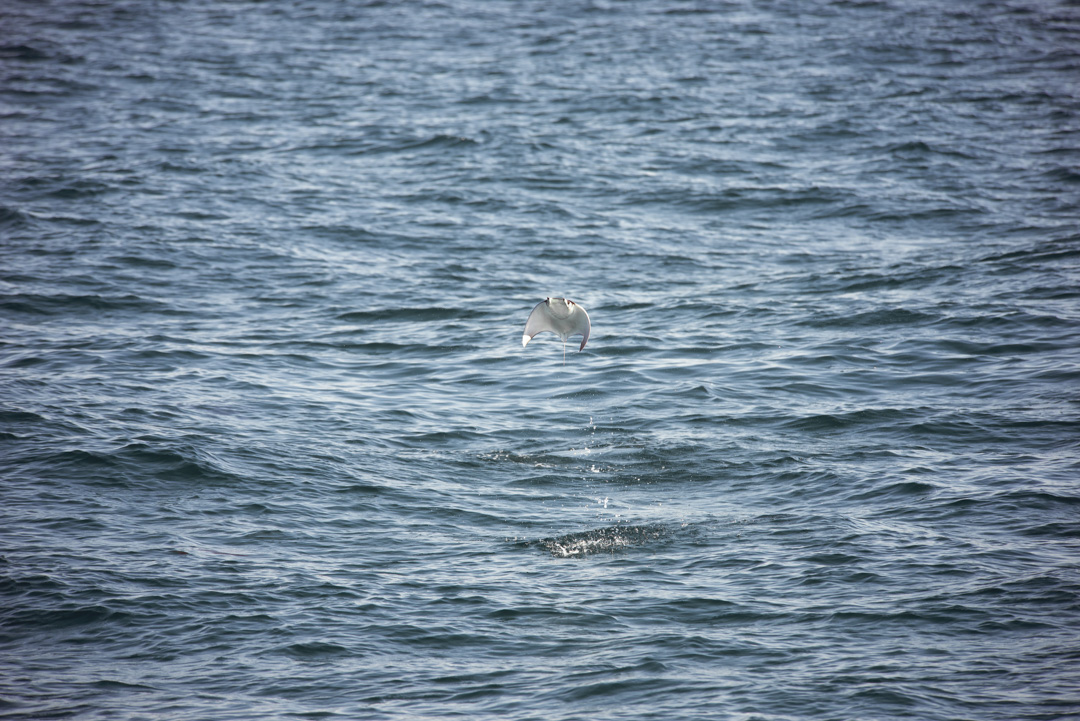
A mobula ray leaps out of the water.
Mobulas love to jump out of the water and frequently form massive schools, sometimes numbering in the thousands. It’s not uncommon for tens of different animals to be in the air at the same time. A common theory is that they jump to attract mates.
The school I was photographing that afternoon was rather small, but the leaps were wonderful to witness — as they always are.
Baja California. On an expedition with Mission Blue, 2015
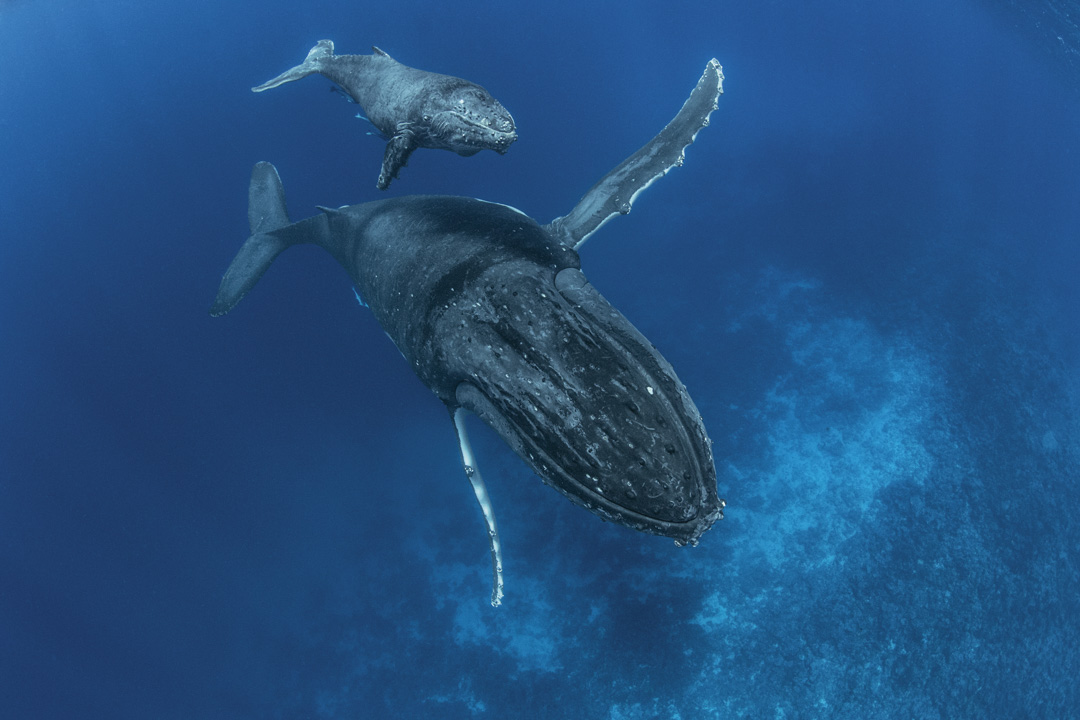
Synchronized mother and calf swooping in.
This duo then passed right under my legs, deciding against an alternate route.
Vava'u, Tonga, August 2015
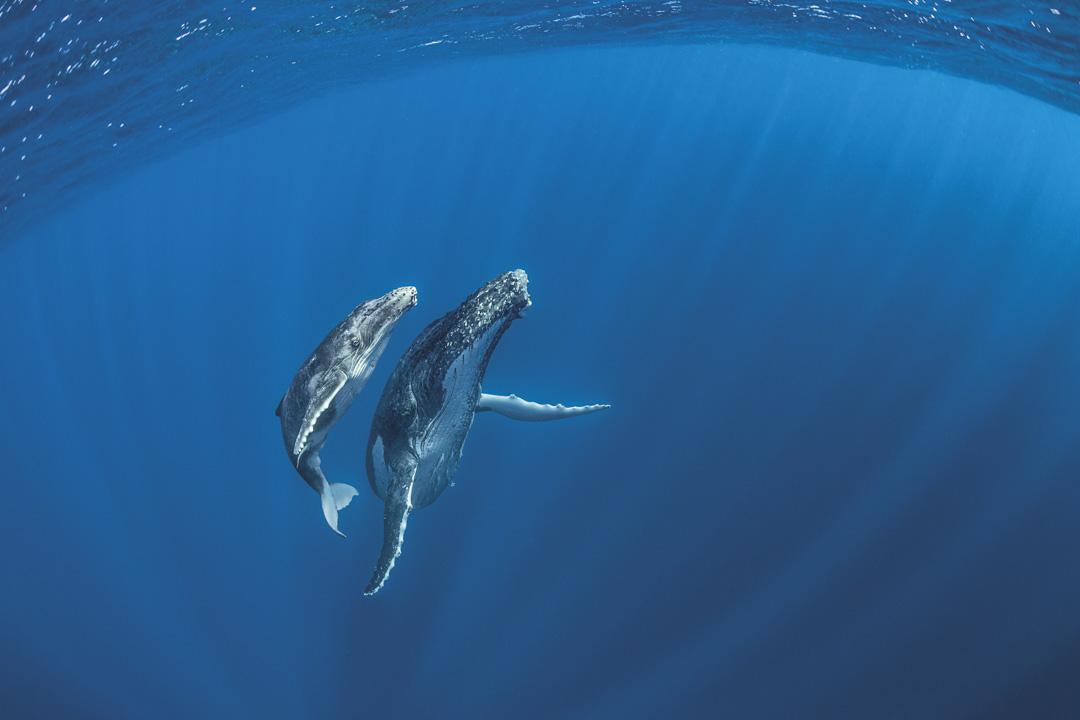
Fisheye view of a mother and her calf, ready to rise.
Vava'u, Tonga, August 2015
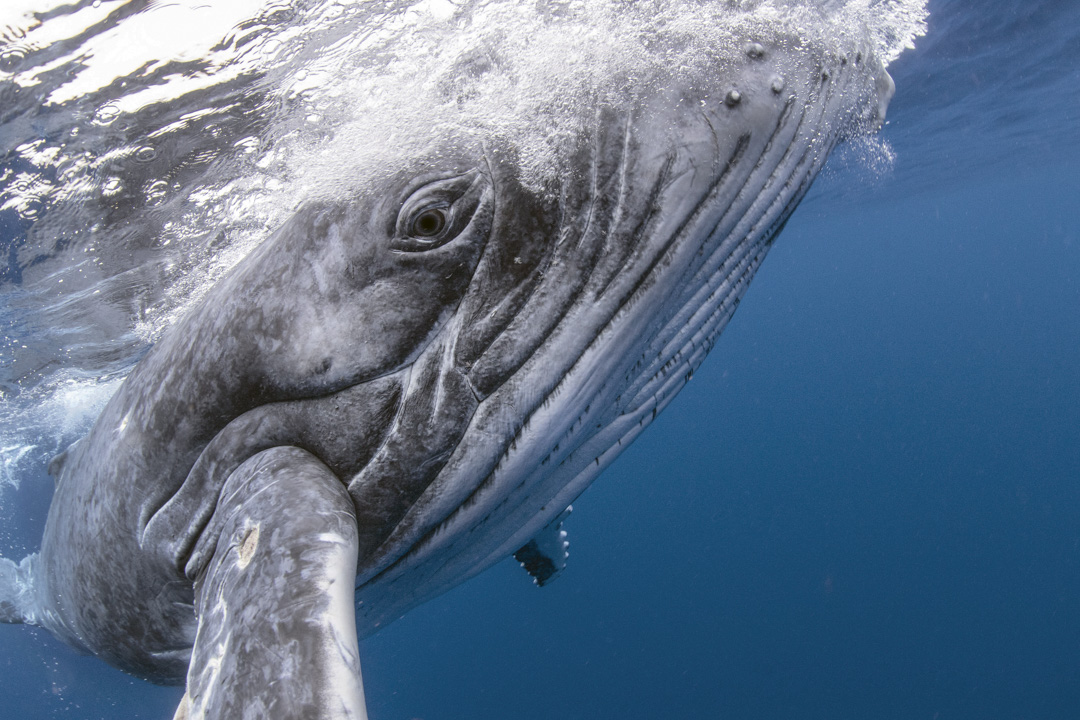
Bumping into a delightful humpback whale calf.
This magnificent child first bumped my friend Trevor while lazily making a pass through our group. Its fin was actually against me when this picture was taken. It felt as if time had slowed down for this interaction...
Vava'u, Tonga, August 2015
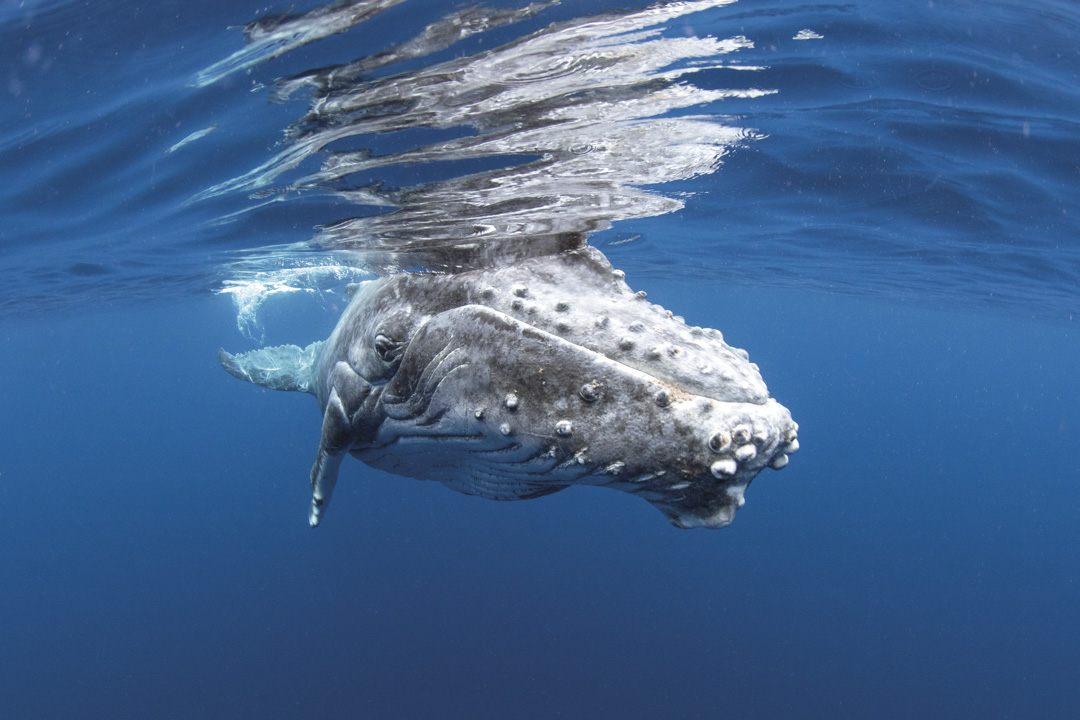
Humpback whale calf approaching.
There’s nothing in the world quite like having a whale come toward you, regardless of its age or size.
Vava'u, Tonga, August 2015
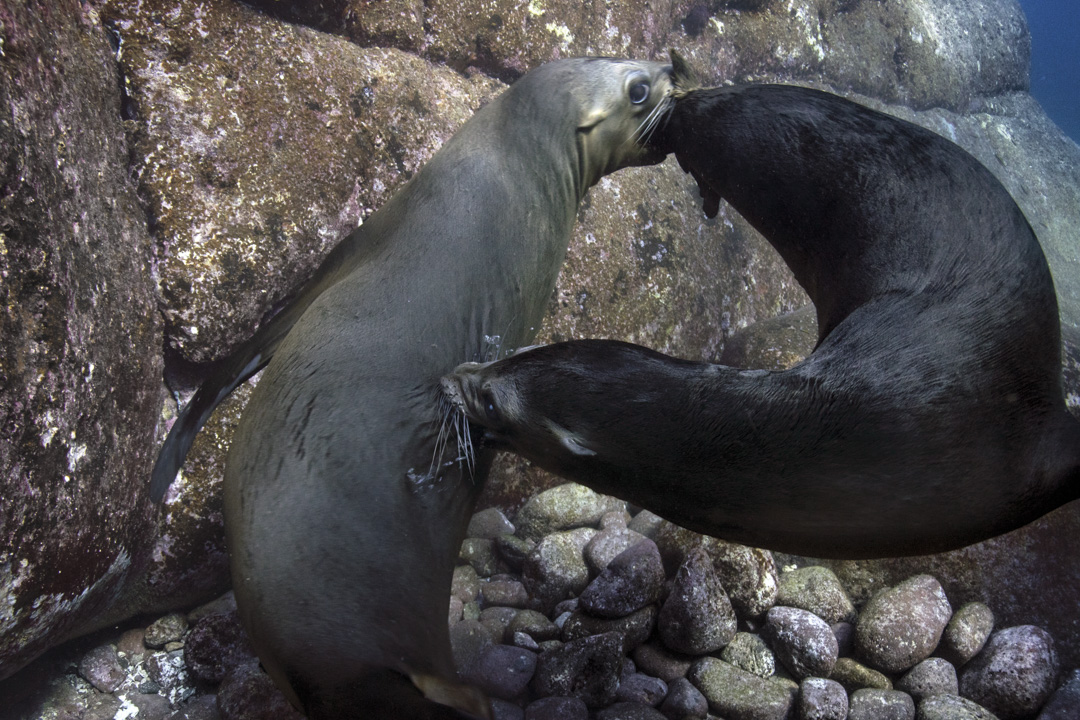
“Take THIS!” – Sea lions from the Los Islotes colony playfight.
Los Islotes, Mexico, March 2016
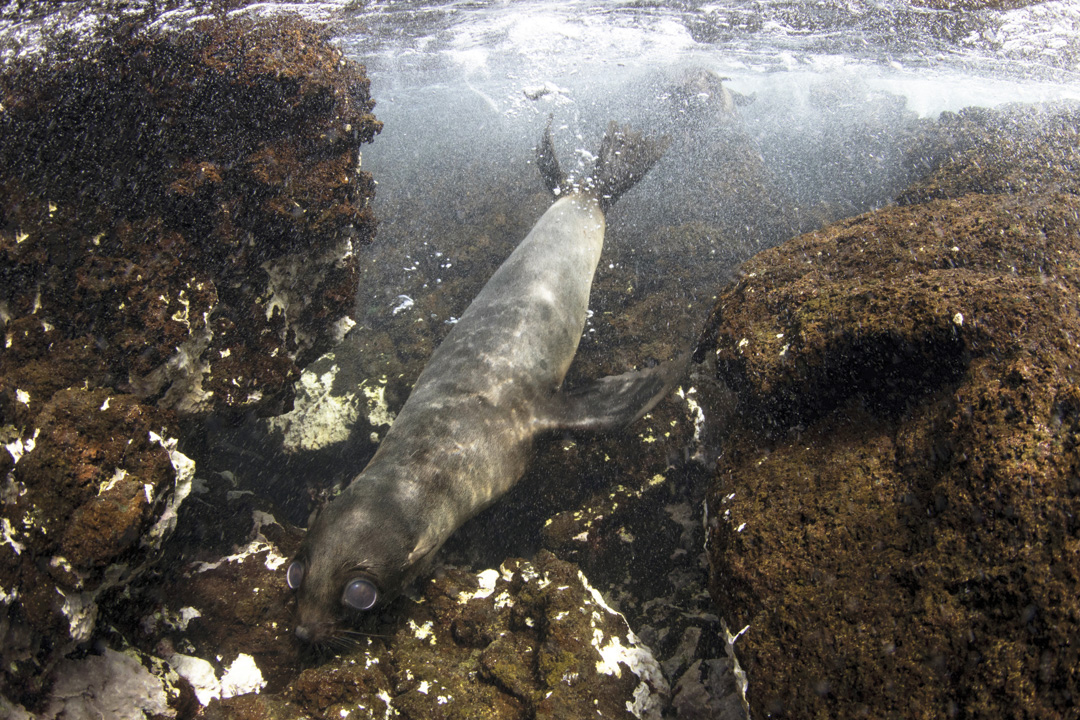
Fur seal pup in the surge.
Most of the time there were 2 of them in this, their private pool; a few more swam and played in the surrounding area.
The Galapagos, May 2016

"Alien Eyes!"
Fur seal pup.
At times it felt like we were playing peekaboo. Regularly it would come forward before backing up into the rocks again.
The Galapagos, May 2016
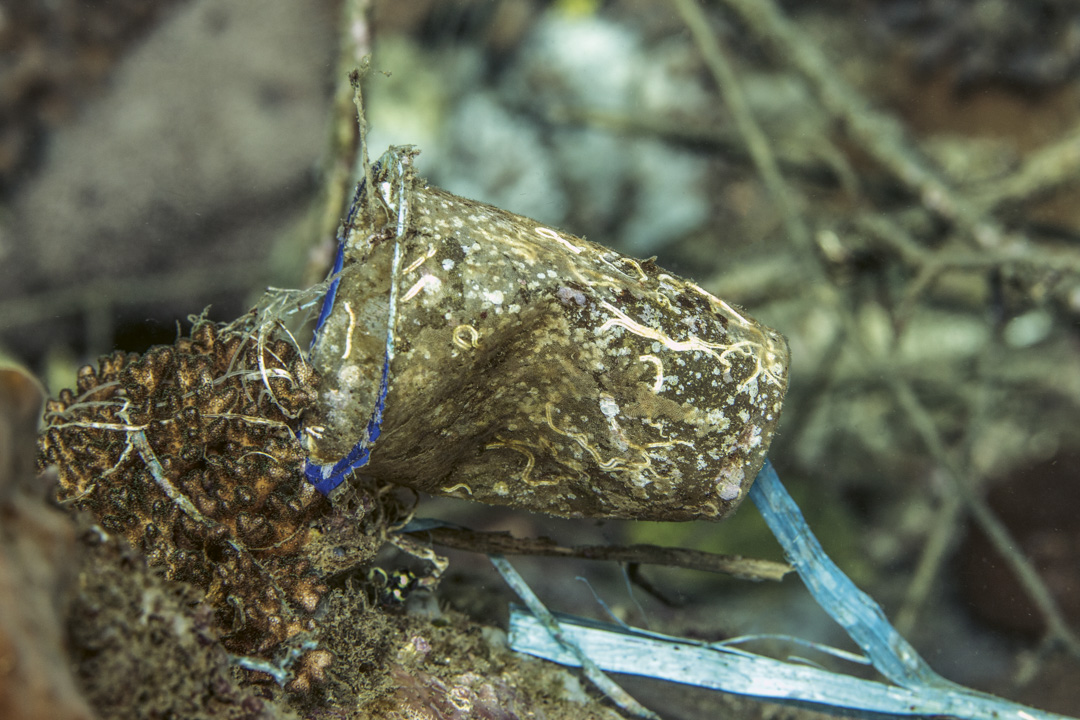
Plastic glass.
Just one example of the terrible things we are doing to our oceans.
In 2050 there will be more plastic than fish (by mass) in our seas.
Indonesia, August 2016
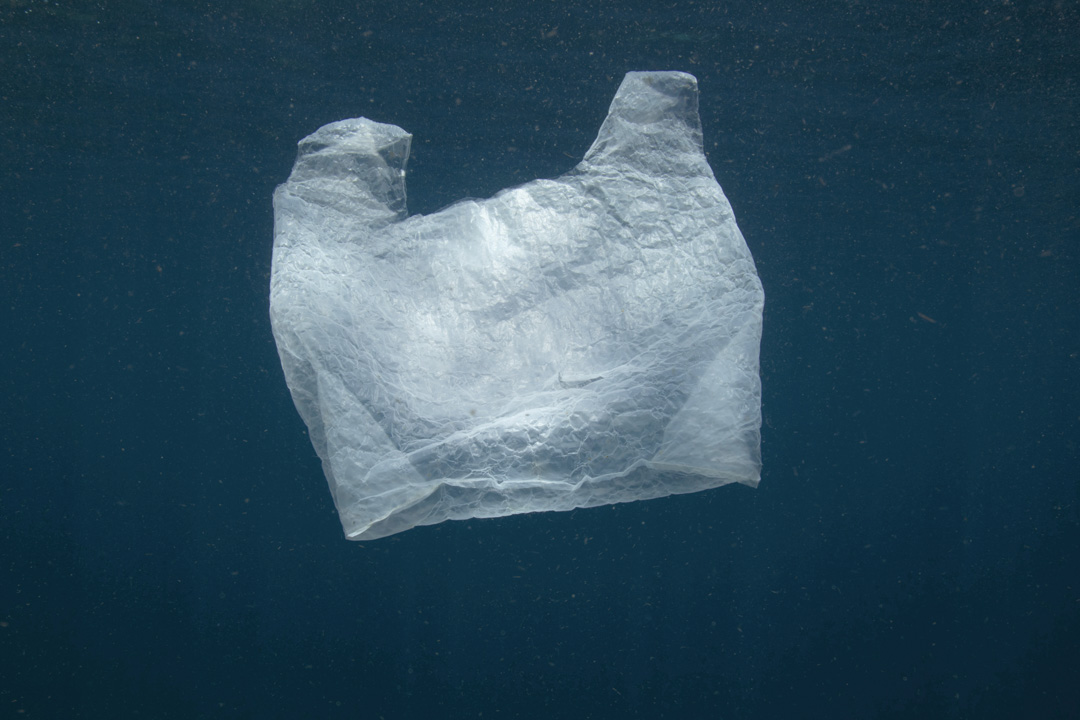
Plastic bag
This was one of the most depressing things I’ve ever witnessed...
Philippines, May 2017
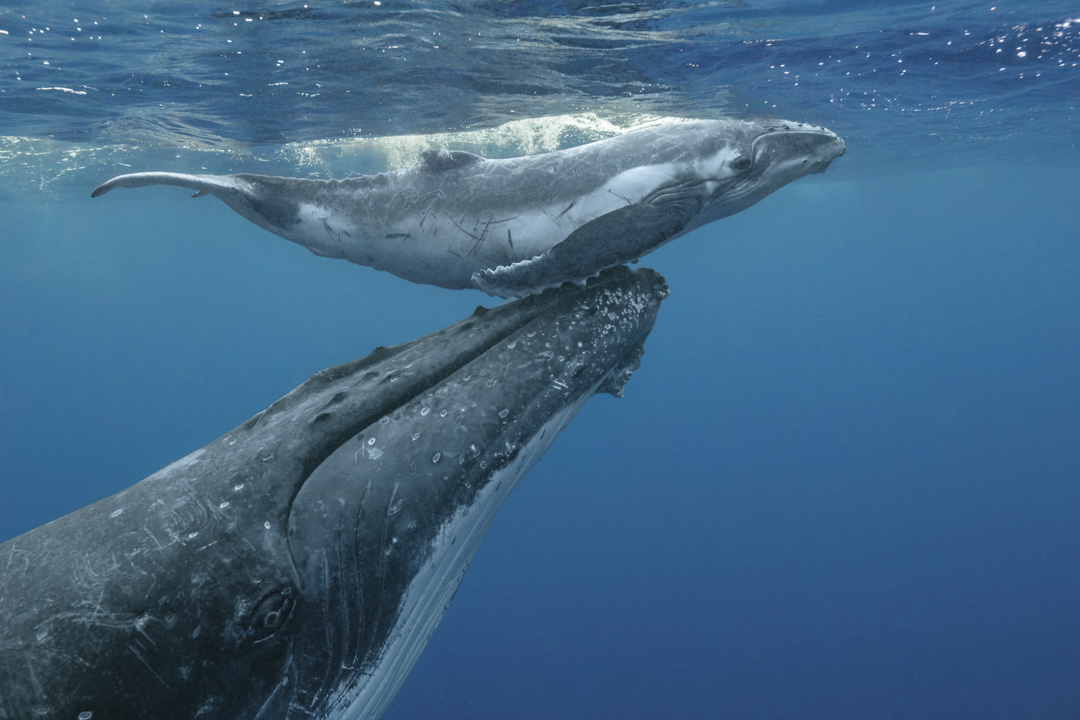
A humpback whale calf rests on its mother’s head at the surface.
Vava'u, Tonga, August 2017
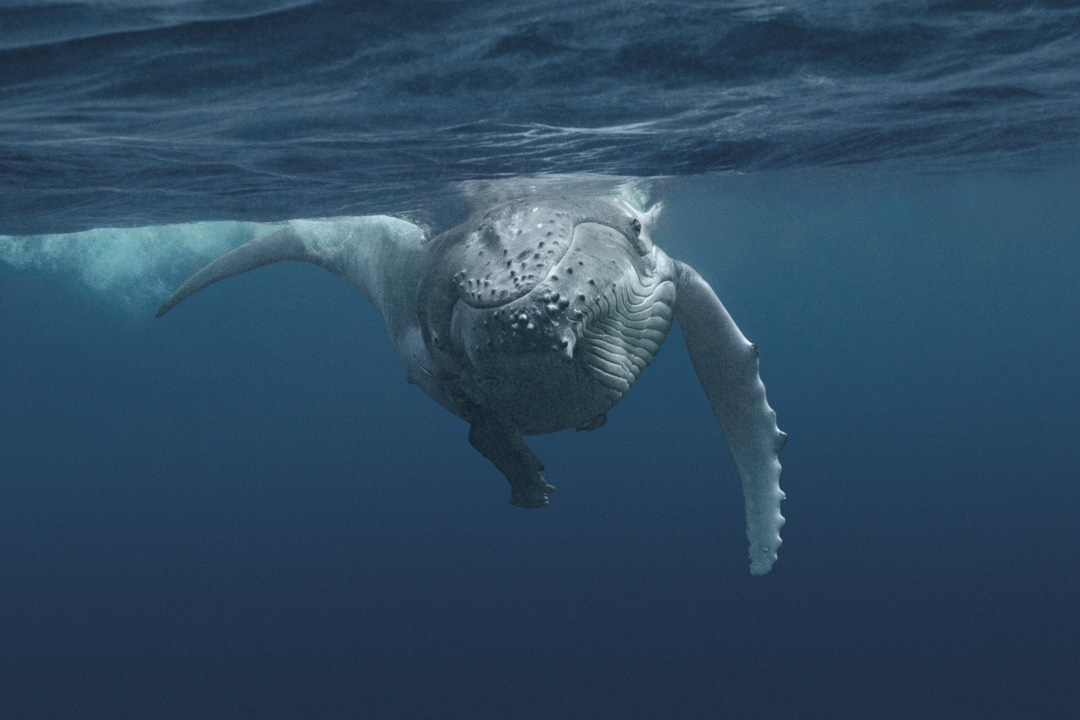
What my friend Tamiko calls ‘Attack whale’!
It rushed to us very fast before diving down just a few meters in front of us.
Vava'u, Tonga, August 2017
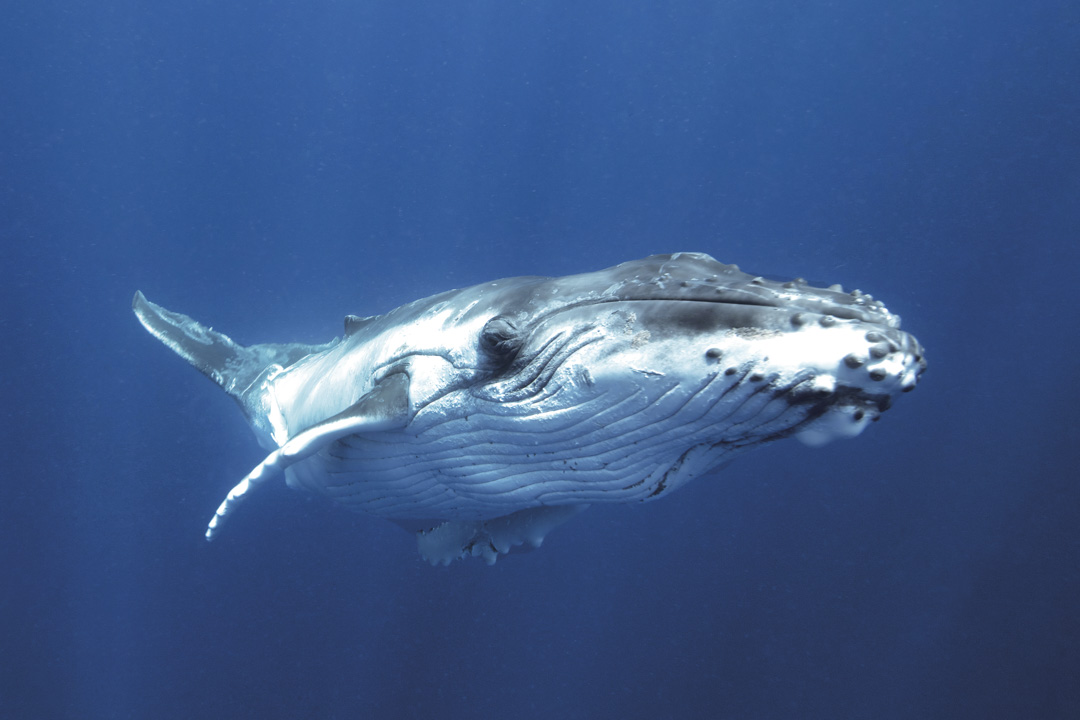
A very curious humpback whale calf.
I believe this one swam right into my guide a few moments later!
Vava'u, Tonga, September 2017
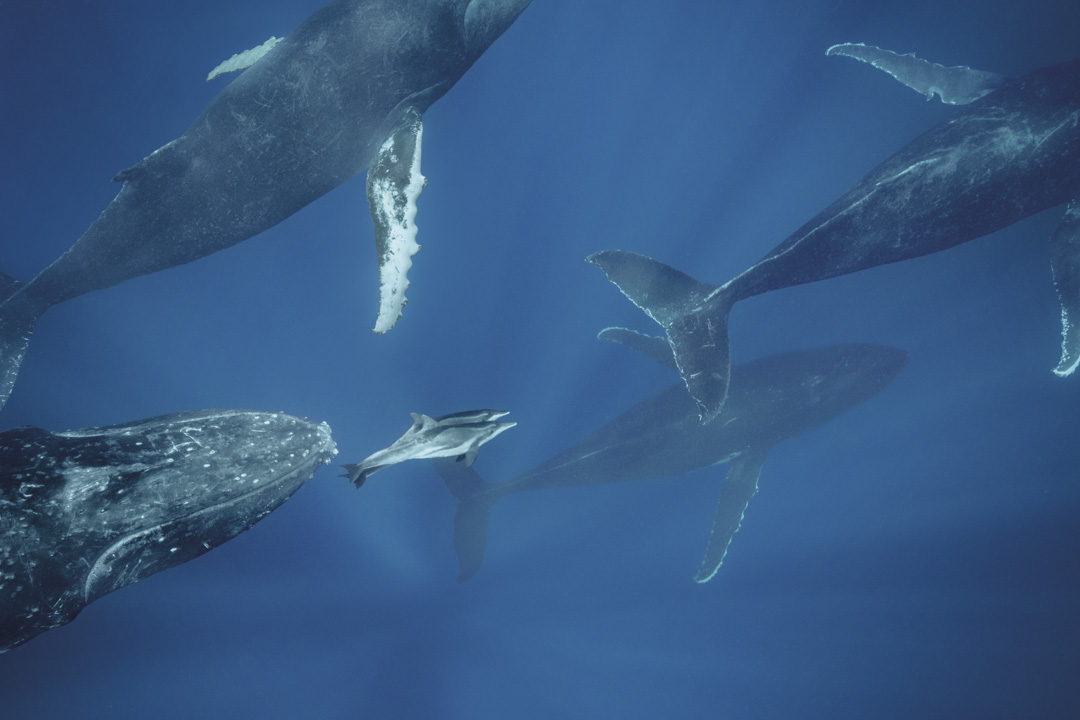
Two rough-toothed dolphins swim with humpback whales off Vava’u.
It’s not infrequent to see whales and dolphins together. At times we see large groups of dolphins milling around.
In this case the dolphin duo might as well have been pilot fish...
Tonga, September 2017
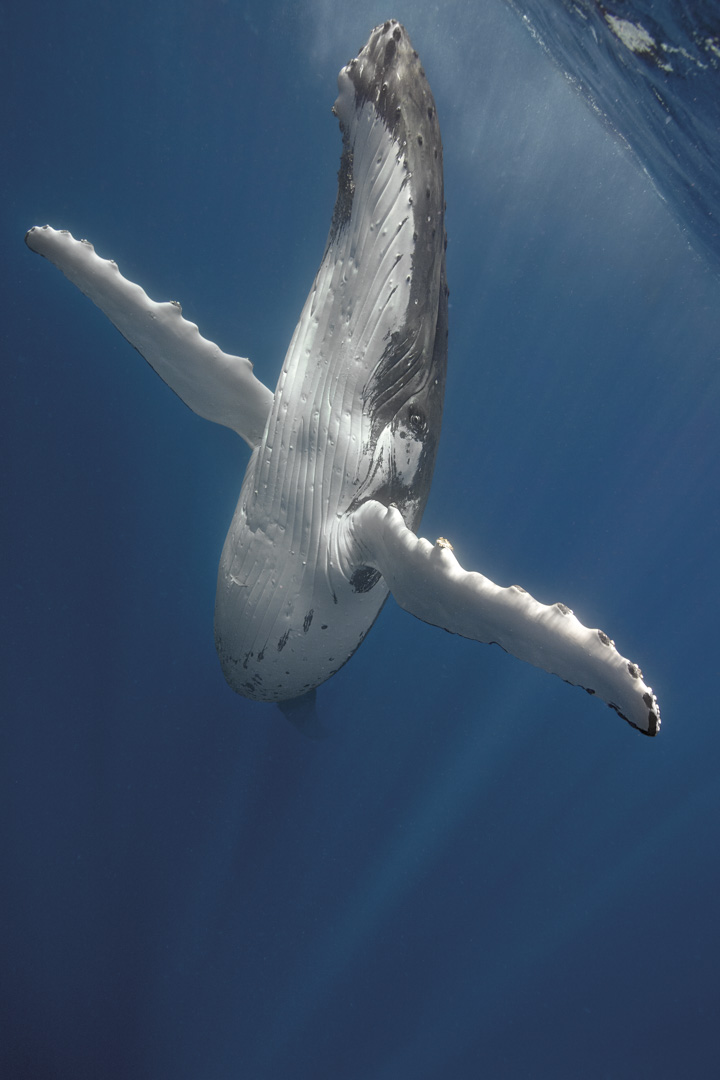
Humpback whale spreading her immense pectoral fins as she hovered vertical.
After her calf had swum off, this incredible mother turned away from the guide, rotated towards me and looked directly at me for a timeless, unforgettable moment.
Vava'u, Tonga, September 2017
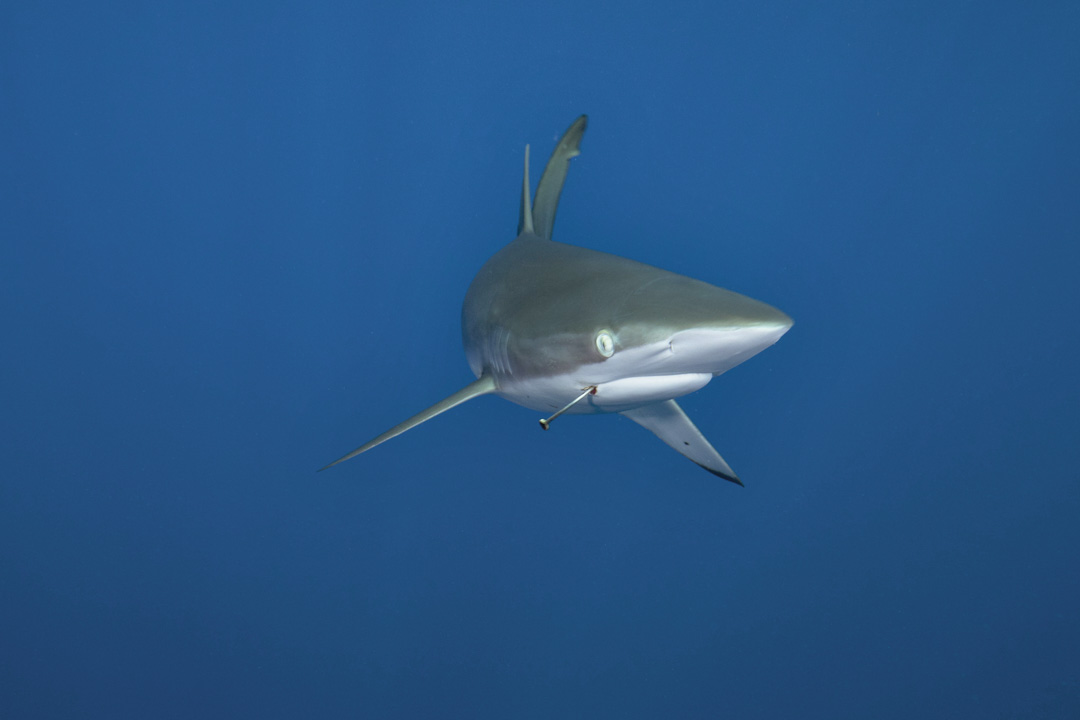
A silky shark hooked.
Mankind is killing approximately one hundred million sharks a year for their fins. A few years ago the low estimate was 80 million, the high one 273.
The Bahamas, December 2017
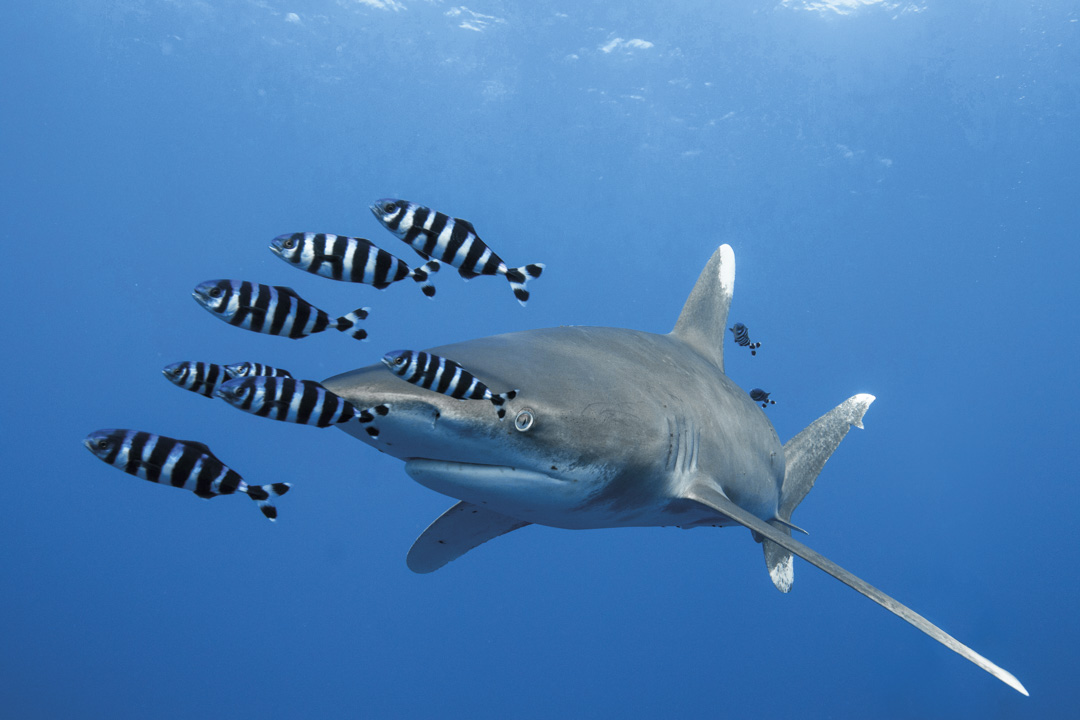
An oceanic whitetip shark and pilot fish cruise the waters of Elphinstone reef.
Egypt, December 2017
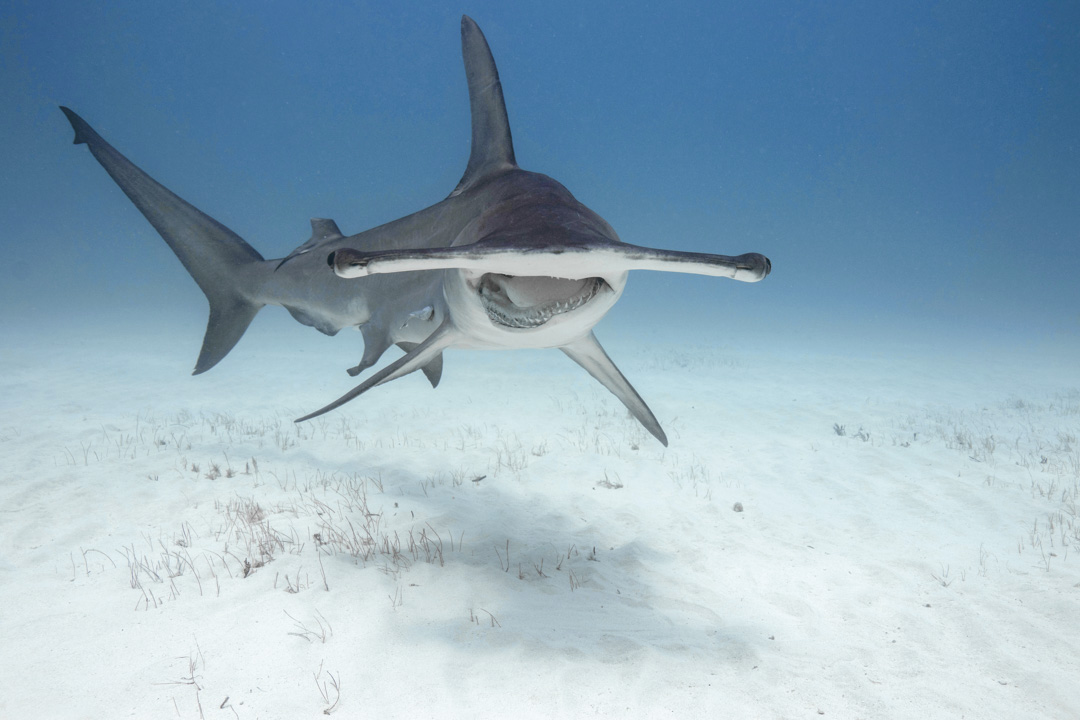
Great hammerhead, its mouth torn on the side, most likely due to a fishing injury.
Some fishing practices are more brutal than others — and some fishermen less caring than others.
This shark must have suffered from one or both of the issues above.
It certainly seemed to have a harder time eating than the rest of the sharks we saw that day.
Bimini, The Bahamas, April 2018
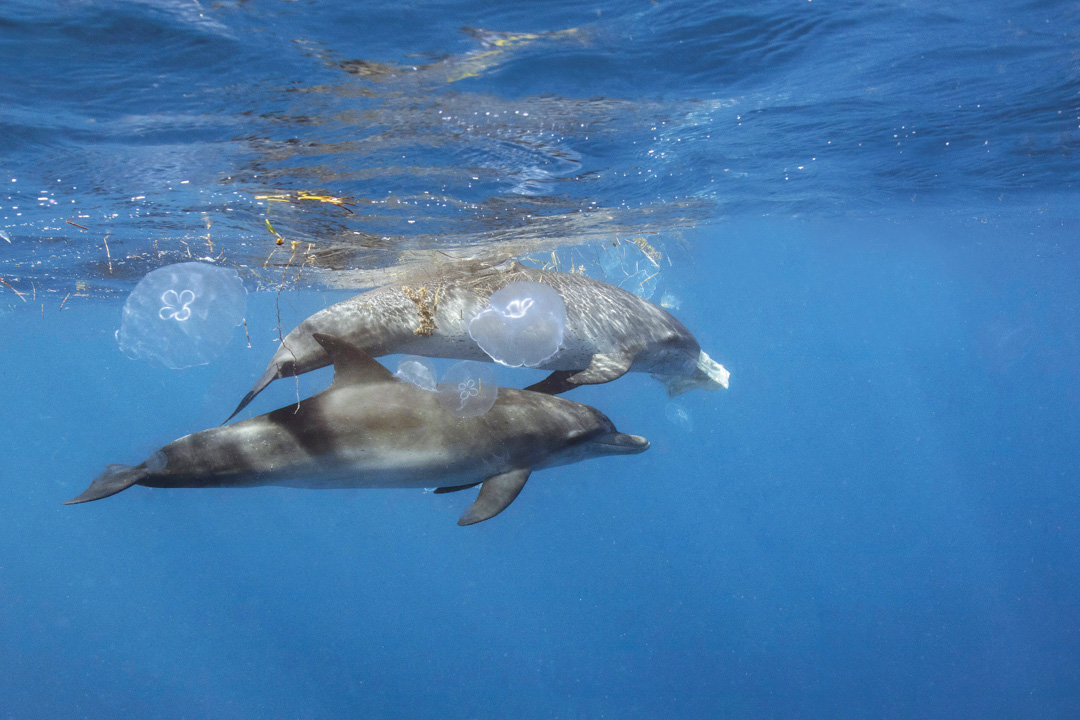
Atlantic spotted dolphins swimming through jellyfish, paper and trash.
The Bahamas, August 2018
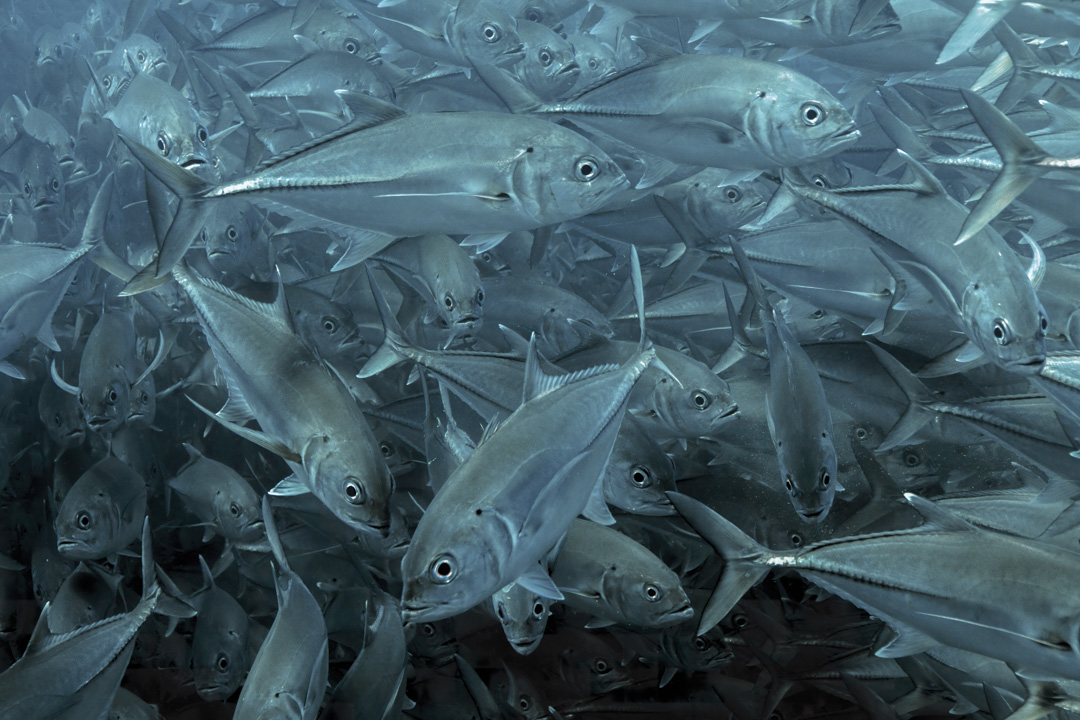
Part of the gigantic school of bigeye jacks in Cabo Pulmo.
The jacks are probably the most famous attraction in Pulmo. There are THOUSANDS of them, forming a gigantic, mobile mass. They stay in the same general area all the time... and the guides and captains tell each other exactly where they were last seen. It’s fairly easy to spot this enormous school from the surface.
Mexico, August 2018
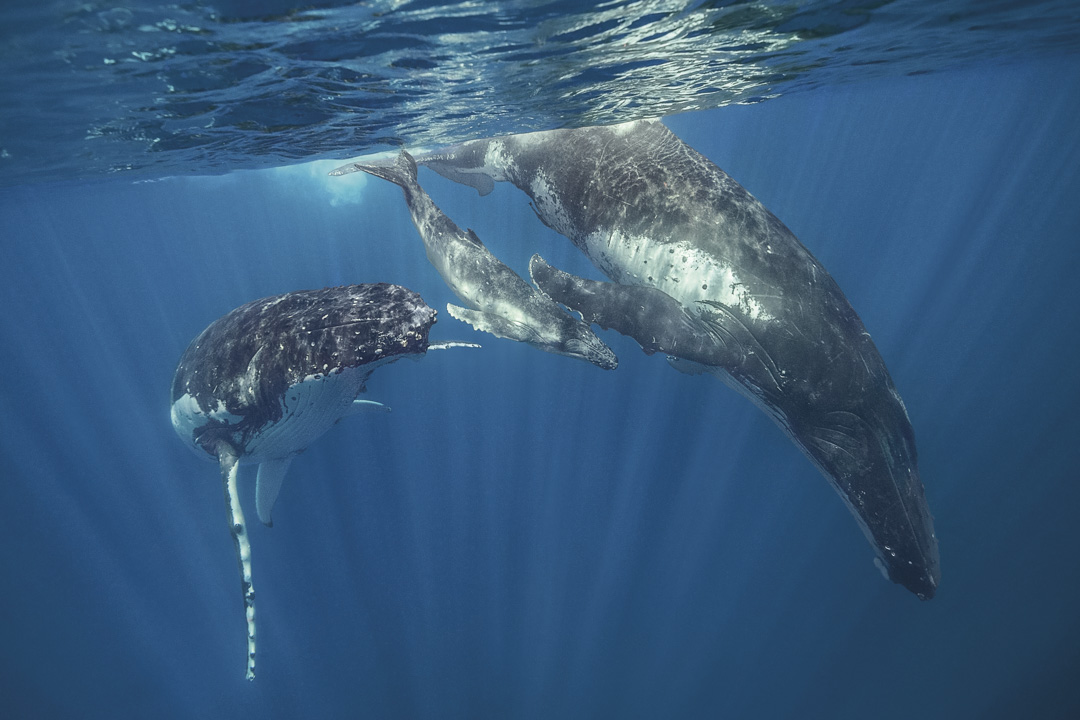
Humpback mum, calf and escort (not the father).
Vava'u, Tonga, August 2018
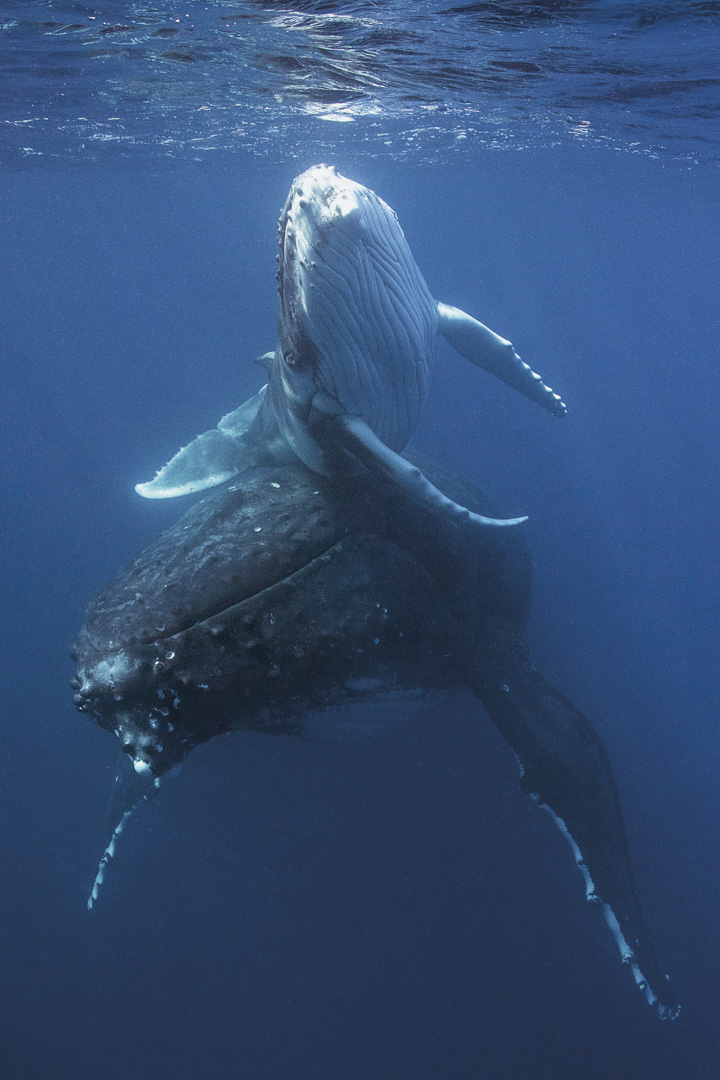
“The baby rises...”
Vava'u, Tonga, August 2018
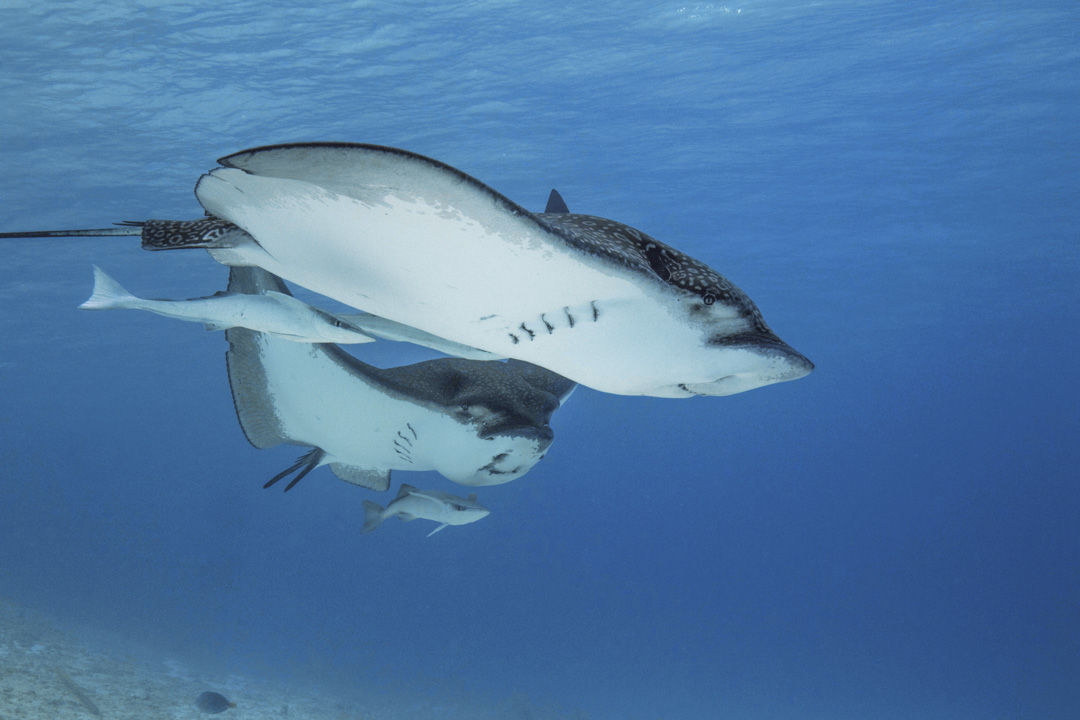
Spotted eagle rays – up close for the first time!
These two stayed together the entire time and initially swam away from us... before looping back, approaching and then passing by.
It always amazes me how thick an eagle ray’s face/head is, given how streamlined they otherwise are and how thin their “wings” appear.
The Bahamas, April 2019
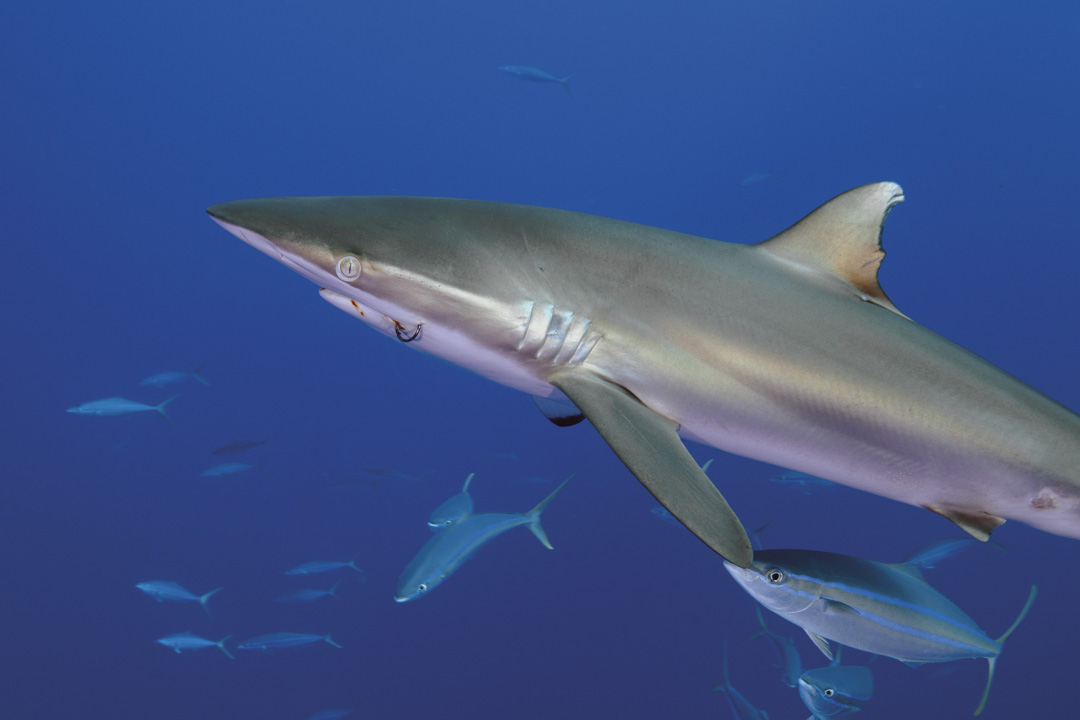
Silky shark with hook and rainbow runners.
Our approach to fishing is beyond flawed.
We have reached a point where... not only are 90% of the big fish already gone; but 50% of stocks are overexploited and another 40% pushed to the limit.
Andros, The Bahamas, April 2019
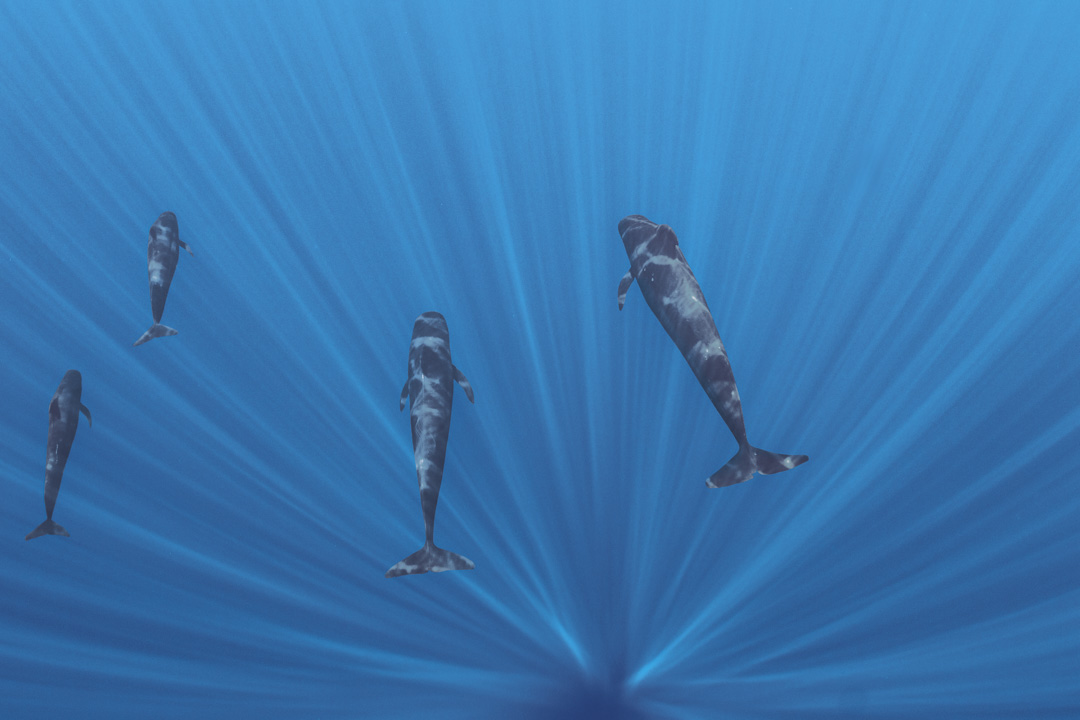
Pilot whales swimming through the light.
Just like Vava’u in Tonga, the waters of Moorea are very deep.
This image is the result of two very long and difficult afternoons, searching for the whales and dropping near them over and over again. They swam away from us nearly every time or dove down as soon as they saw us.
Moorea, August 2019
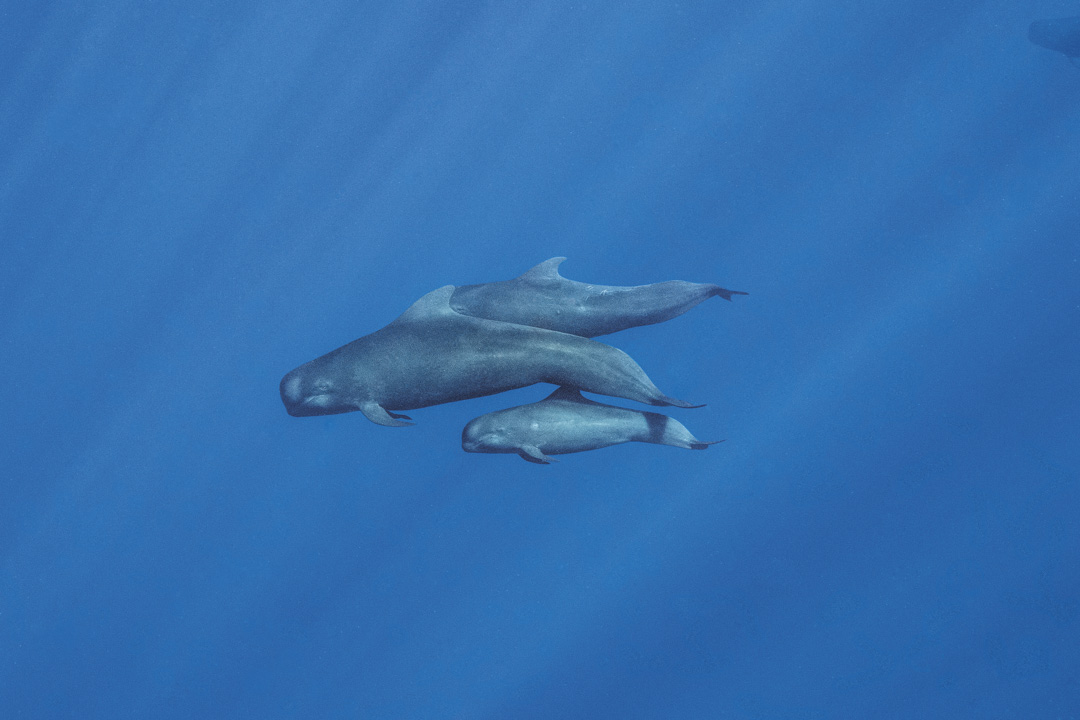
Pilot whales, adults and calf.
It’s always touching and exciting to see a calf...
Moorea, August 2019
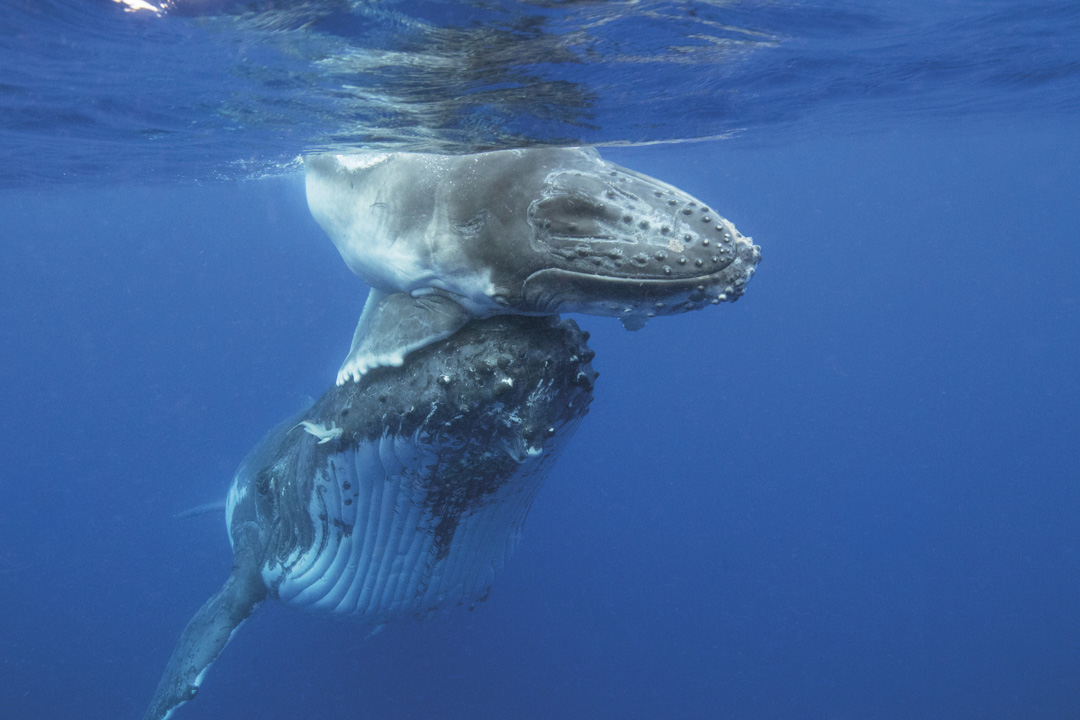
A magnificent humpback whale calf about to roll off its mother’s head.
Vava'u, Tonga, August 2019
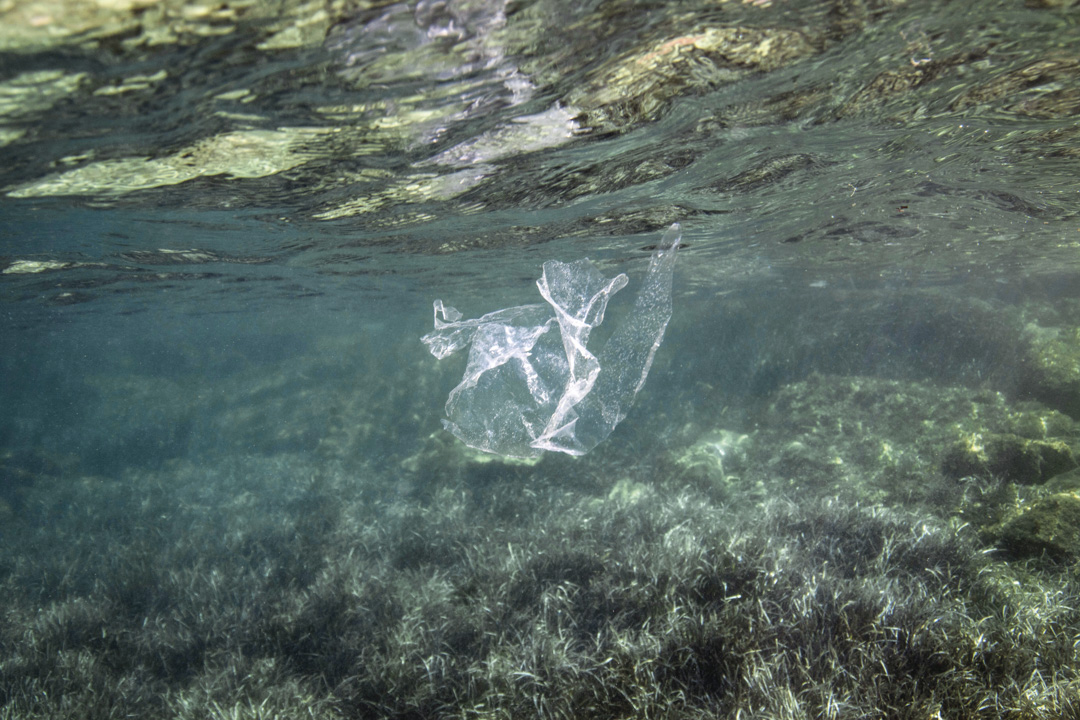
Plastic waste.
This sort of sight is increasingly regular –and equally alarming.
The production of plastic is expected to increase fourfold over the coming years.
Sardinia, August 2020

Plastic waste.
Unfortunately few, if any, effective solutions exist to rid our oceans of this ongoing problem. Most would be difficult to bring to scale. As long as mankind isn’t ready to give up plastic or capable of producing reliable alternatives, our marine environment (and others!) will suffer.
Sardinia, August 2020
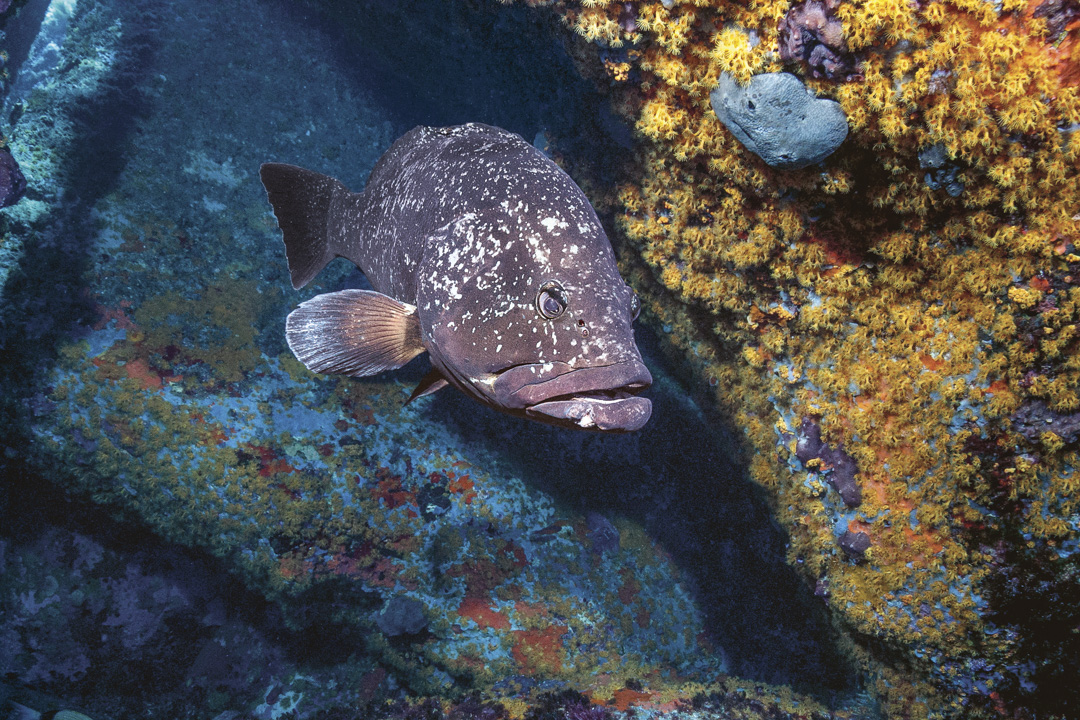
Friendly/adventurous grouper near Lavezzi.
This beautiful fish, with a gaping wound on its lower lip (likely a fishing accident), followed me or stayed by my side for the vast majority of our first dive and the entirety of the second one. An encounter with a large, highly charismatic animal that would be impossible to forget...
Corsica, August 2020
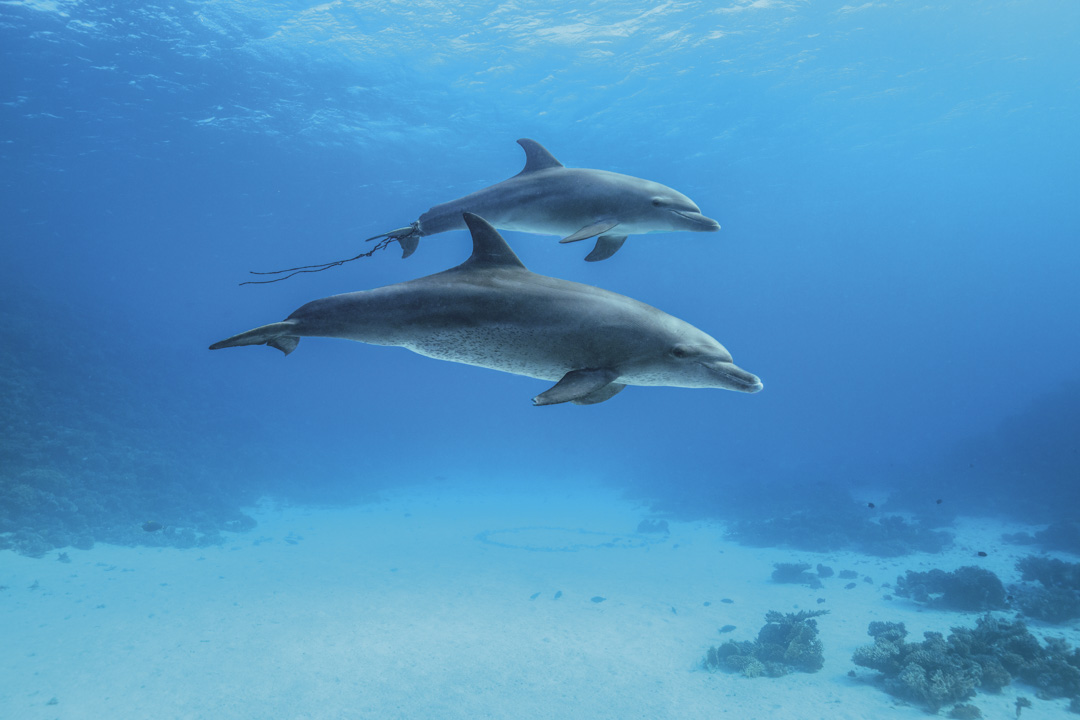
Habituated bottlenose dolphins at one of the sites known as “Dolphin Reef”.
Note the rope attached and digging deep into the second dolphin’s tail – impossible for a simple diver to remove.
Near Hurgada, Egypt, November 2020
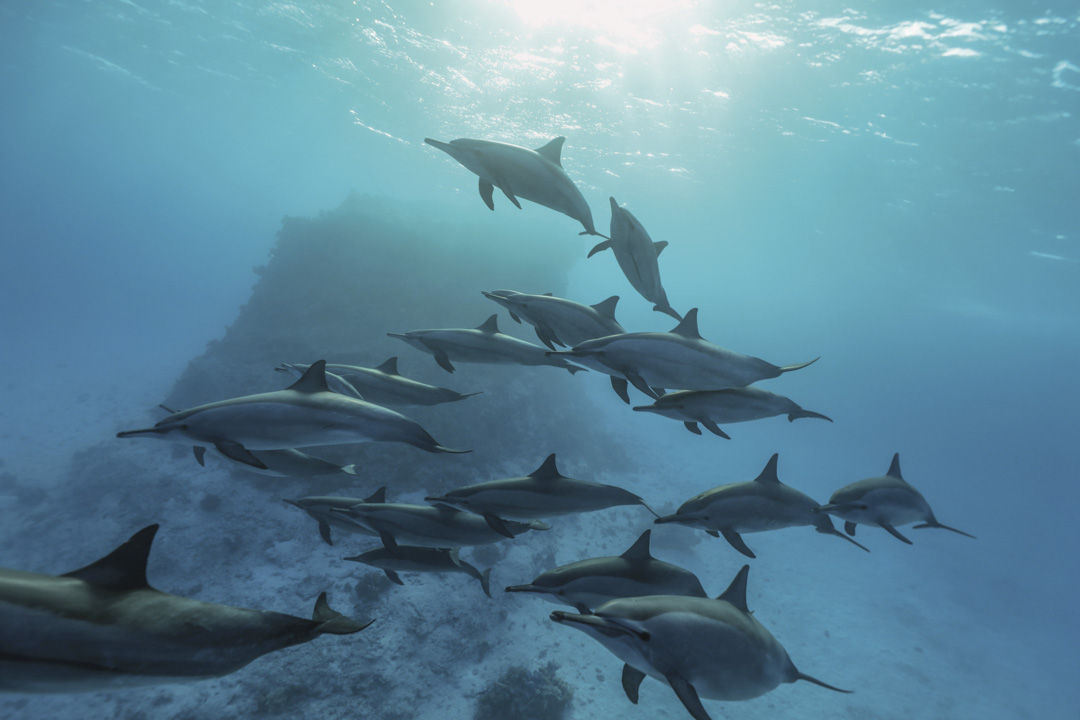
One of my very favourite views of the spinner dolphins next to one of the very few pinnacles in the bay.
Sataya, Egypt, November 2020
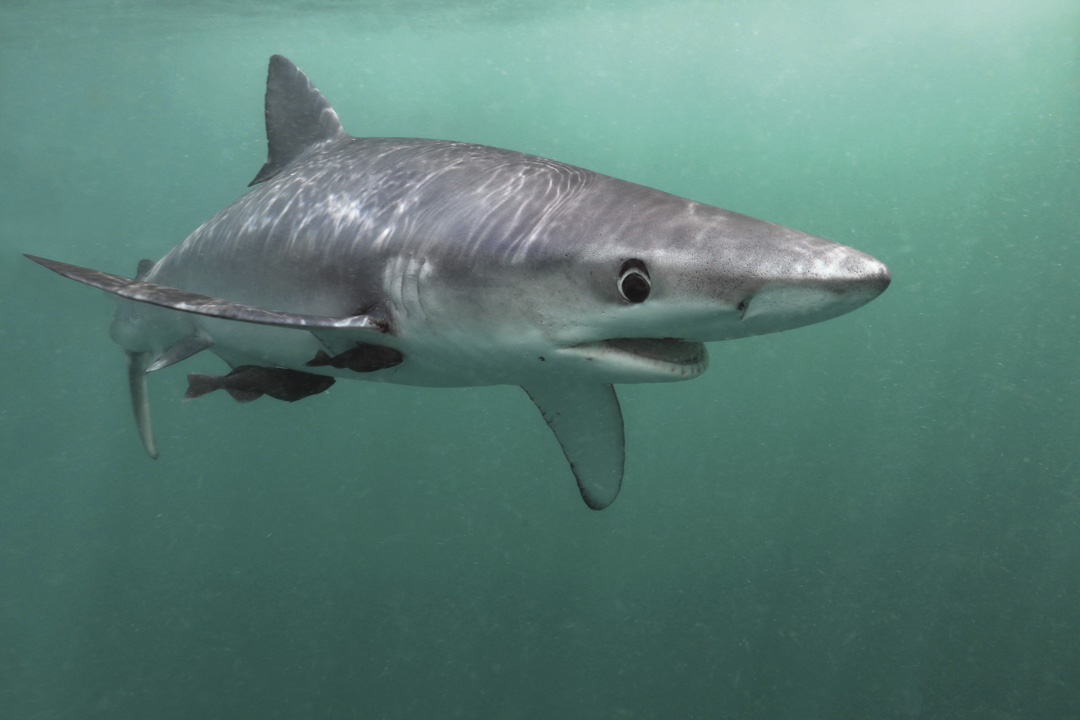
Blue shark close-up.
Blue sharks are among the most prolific in the world. Unfortunately their numbers are declining rapidly due to the finning industry.
Cabo San Lucas, Mexico, March 2021

Trusting hawksbill turtle at a site near Placencia.
This incredible animal allowed me to stay with it, swimming up and down the reef together, for a long time indeed. This is by far the best shot of a plastron (the belly if you will) that I have...
Belize, April 2021
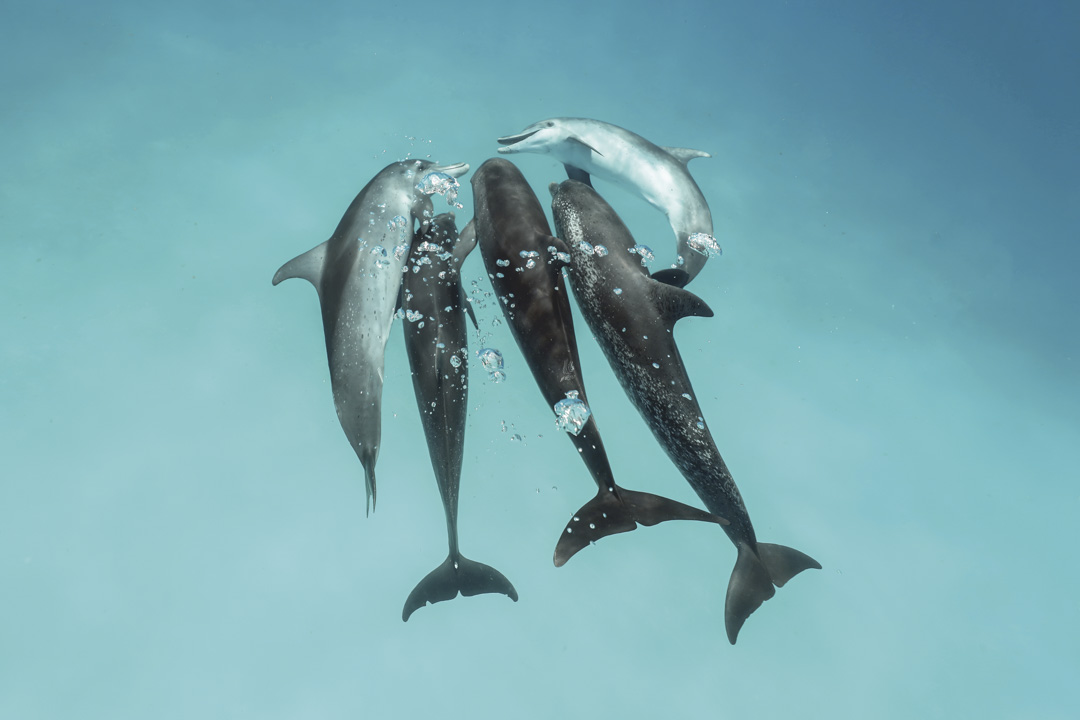
Dolphin games!
I love it when you can tell one or more of the animals has exhaled...
Bimini, July 2021
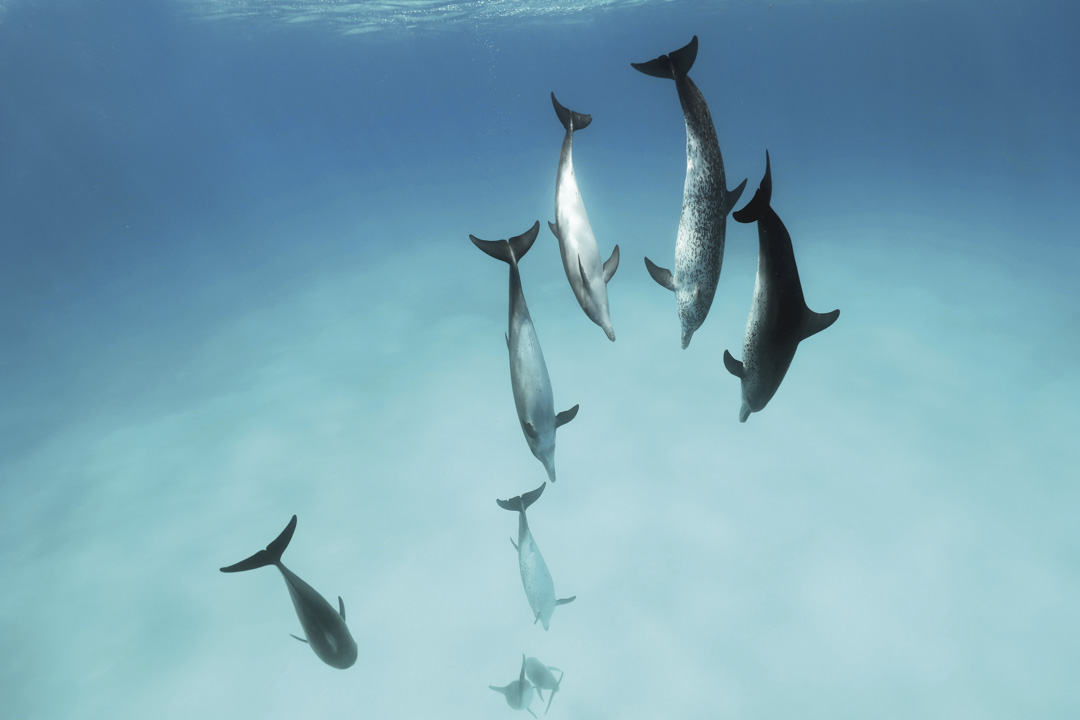
Atlantic spotted dolphins heading to the sand, where they feed on eels among other things or just continue playing.
Bimini, The Bahamas, July 2021
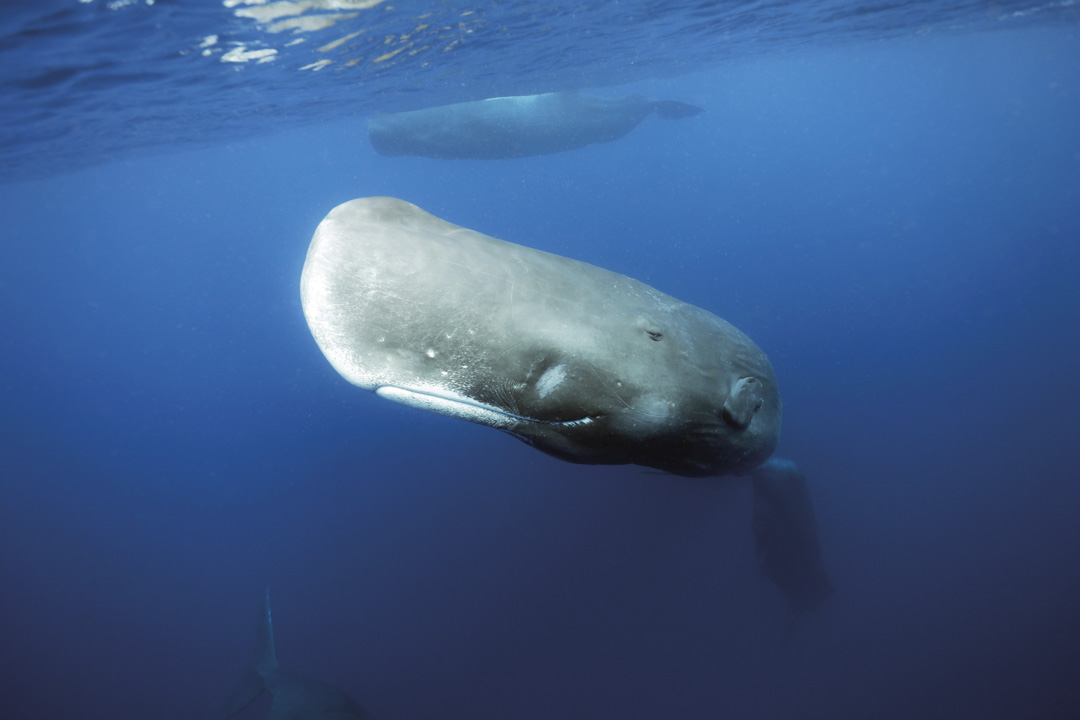
Distant portrait of a sperm whale closer to me than the rest of its family.
Dominica, July 2021
Taken on government permit
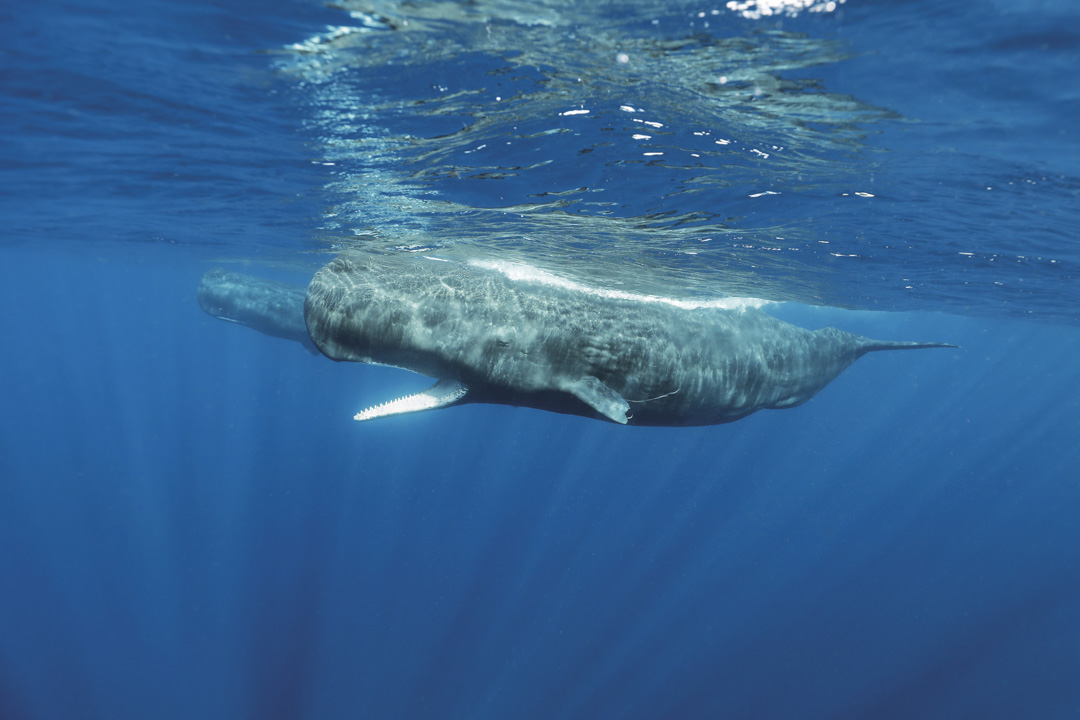
Open-mouthed sperm whale cruising by.
Sperm whales purportedly find it easier to echolocate with their mouths open – the path between mouth and brain the most direct – and occasionally open their mouths when surprised (by a swimmer for example).
Dominica, July 2021
Taken on government permit
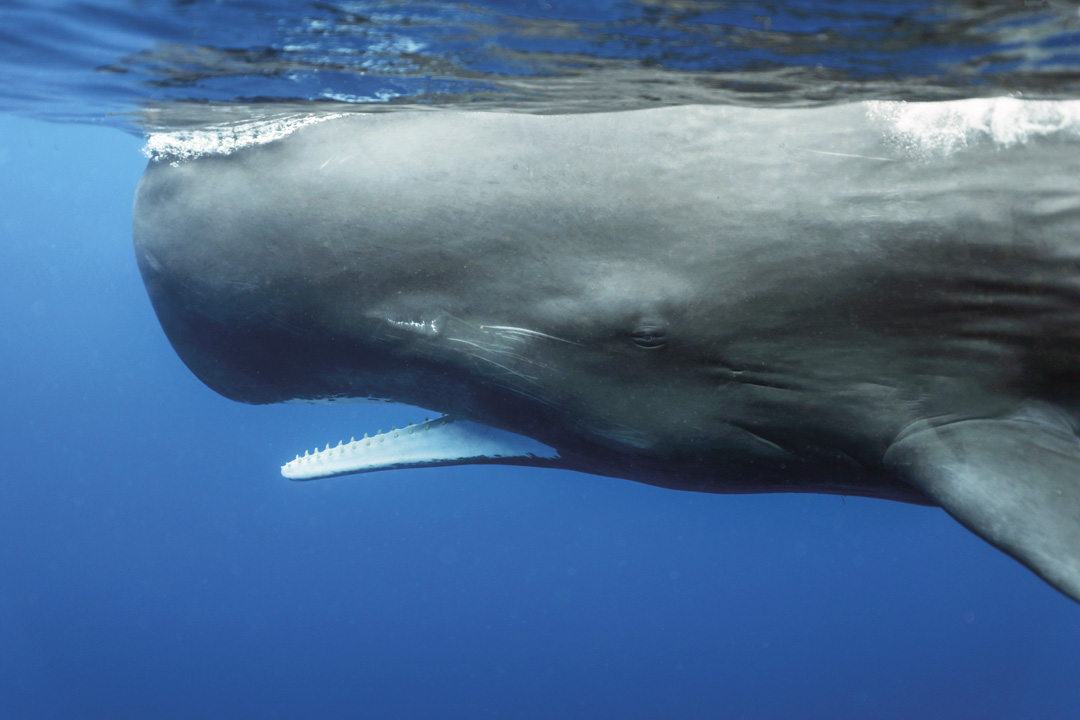
Possibly ‘Can Opener’, one of the most habituated, curious and friendly sperm whales in the area.
Can Opener is a member of the Utensils family group – named by Shane Gero, the top researcher in the area.
Dominica, July 2021
Taken on government permit
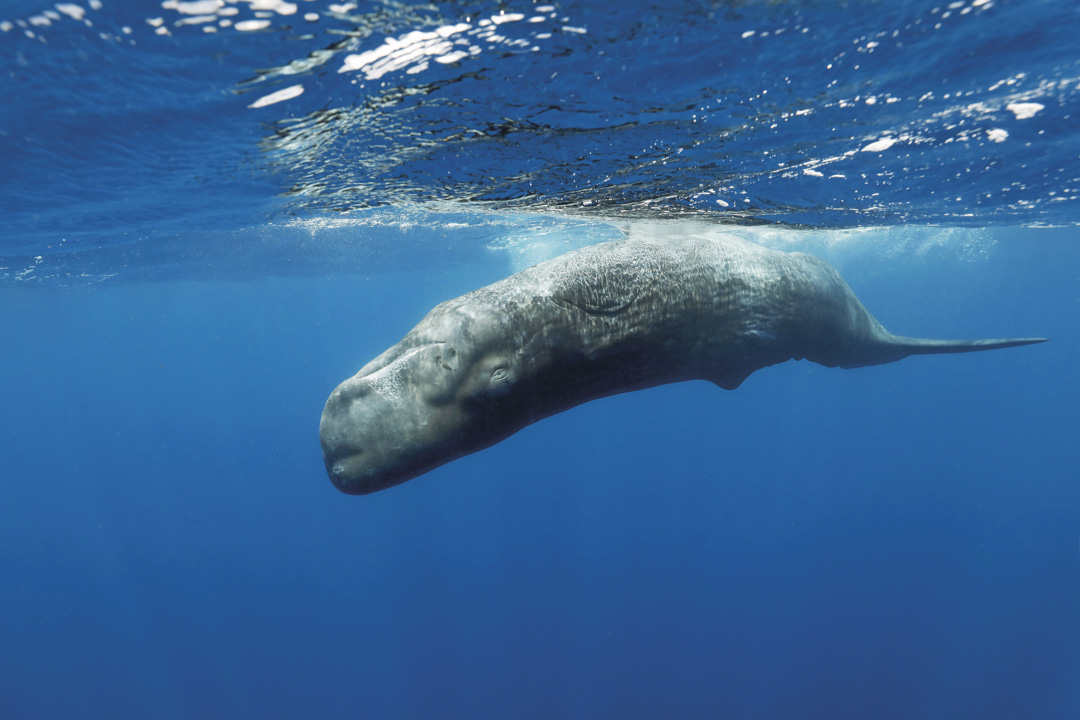
Sperm whale calf, inverted and engaging.
The flip into an upside-down position and antics this calf got up to lasted only a couple of minutes or less. But that’s more than long enough to convince you of intelligence or character and captivate you.
Dominica, July 2021
Taken on government permit
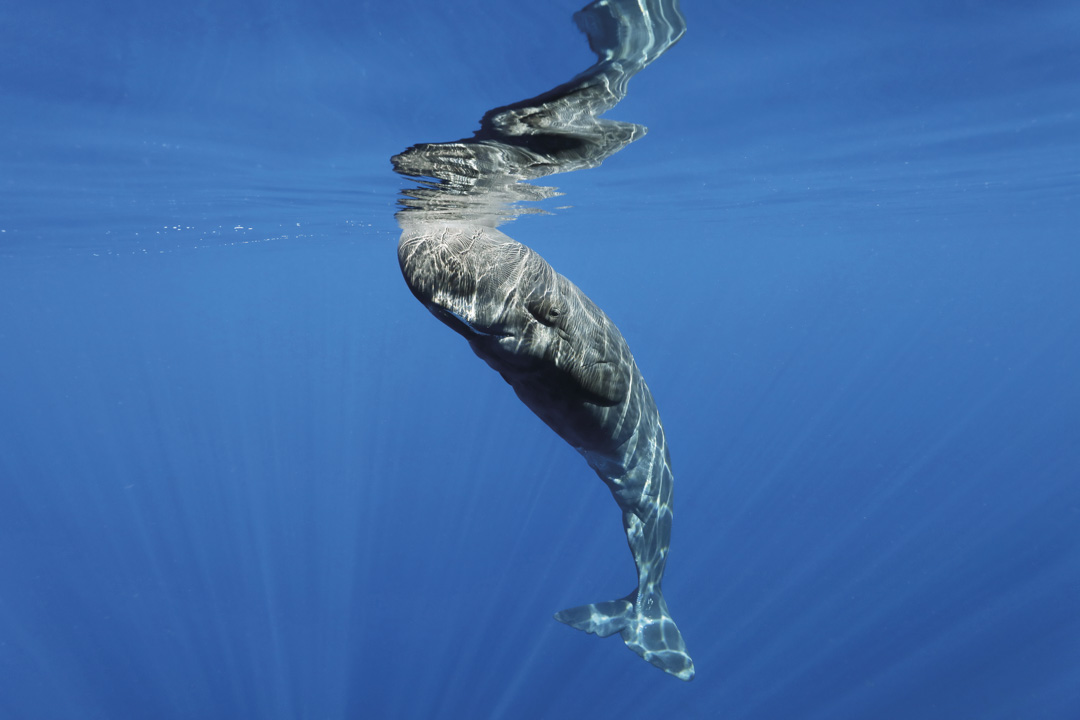
Sperm whale calf waiting for me at the surface.
This ADORABLE young animal waited for me at the surface and allowed me to approach it, come quite close and photograph it for a few minutes. A huge change from the day before when it kept swimming away from me. A delightful experience with a wonderful and patient young creature!
Dominica, July 2021
Taken on government permit
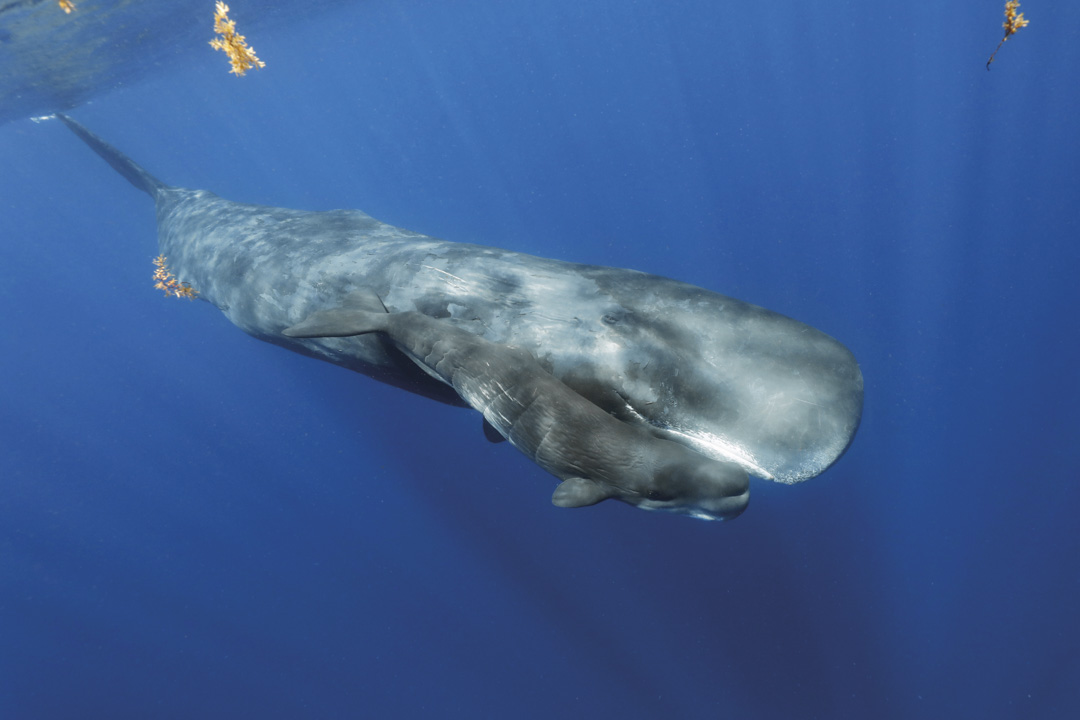
Sperm whale mum and calf.
One of the most beautiful things I’ve ever seen. You can tell from the folds on the calf that it is still very young indeed.
Dominica, July 2021
Taken on government permit
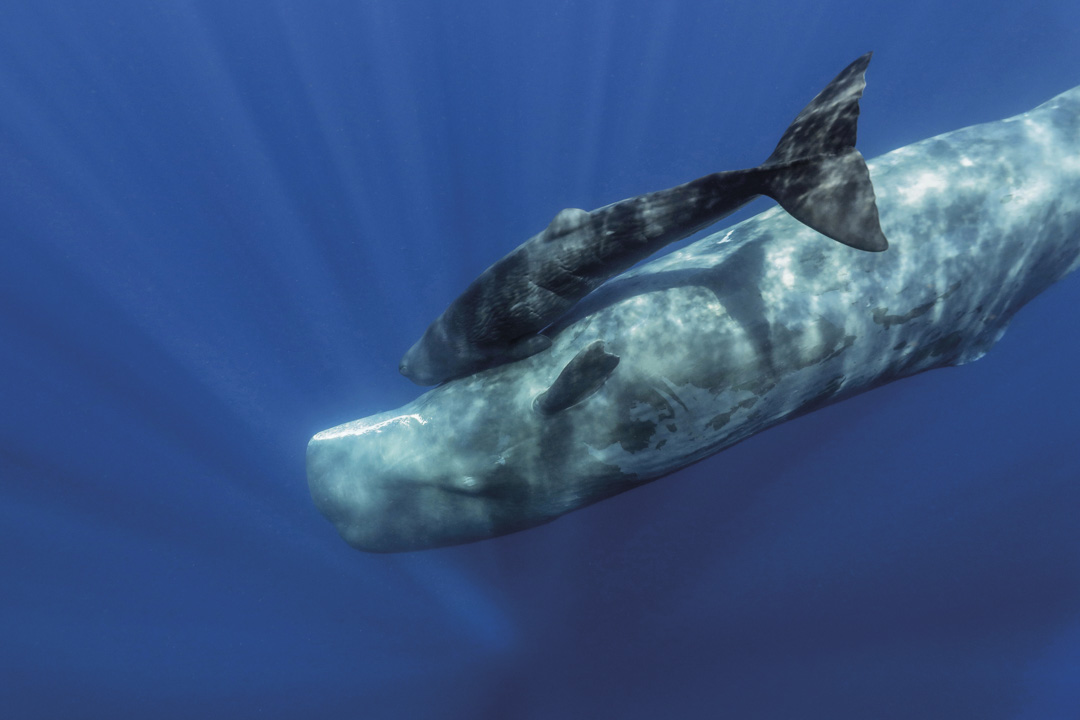
Sperm whale mum and calf
Far too high up its mother’s body to access milk, I think perhaps this calf was giving its mother a hug!
Dominica, July 2021
Taken on government permit
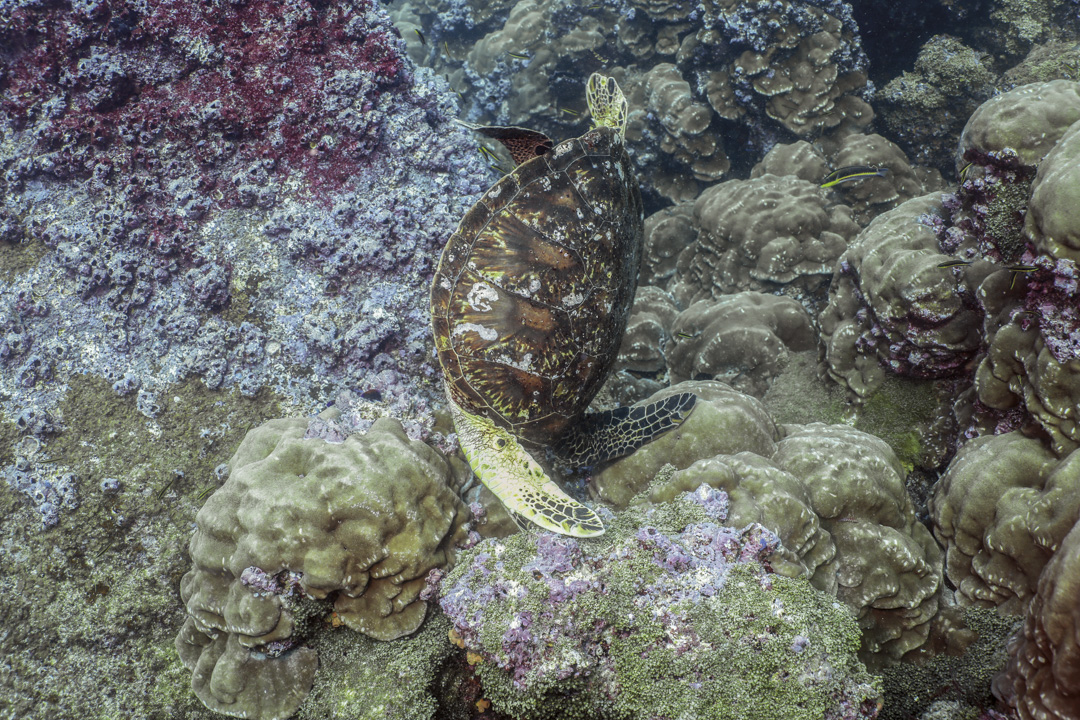
A hawksbill turtle feeds in the strangest of positions.
Darwin, The Galapagos, August 2021

A wonderful fur seal in the company of king angelfish.
We found the fur seals at the same location on Wolf every day and always began and ended our dives with them. Frequently, and especially when the current was excessively strong beyond this enclave, we would spend our whole time just with them.
Pinniped behavior is always well worth focusing on, your time with seals and sea lions well spent.
They are extremely interesting to watch, playful and curious.
Wolf, The Galapagos, August 2021
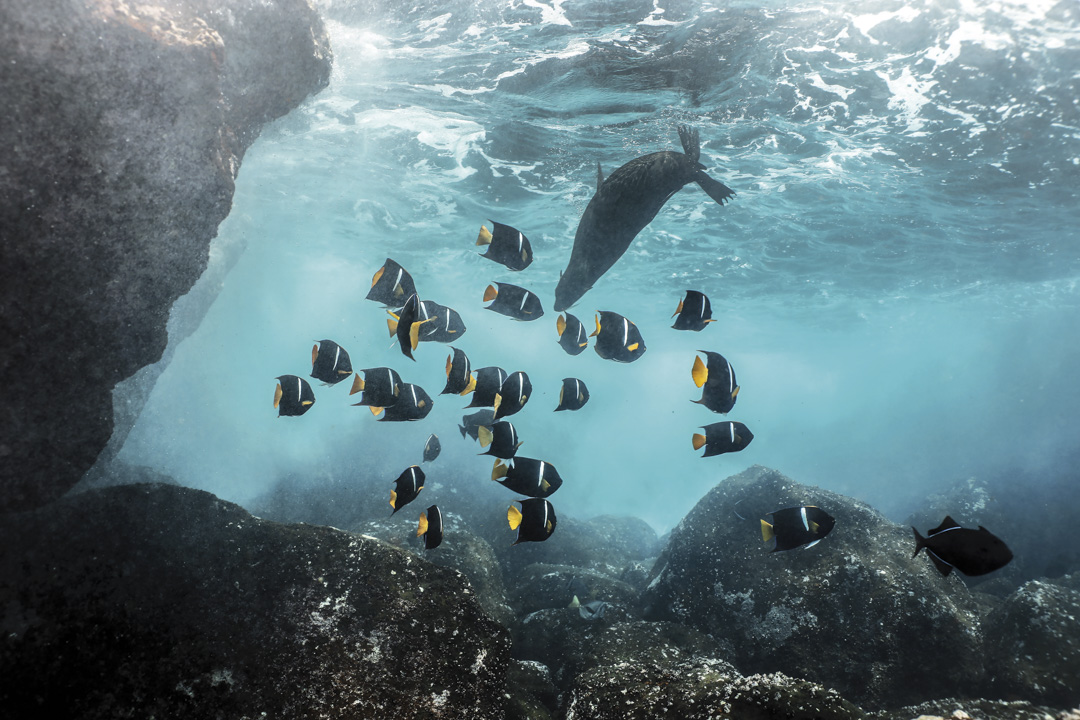
Wonderfully positioned fur seal and king angelfish in the surge.
I’m in love with the geometry of this frame...
Wolf Island, The Galapagos, August 2021
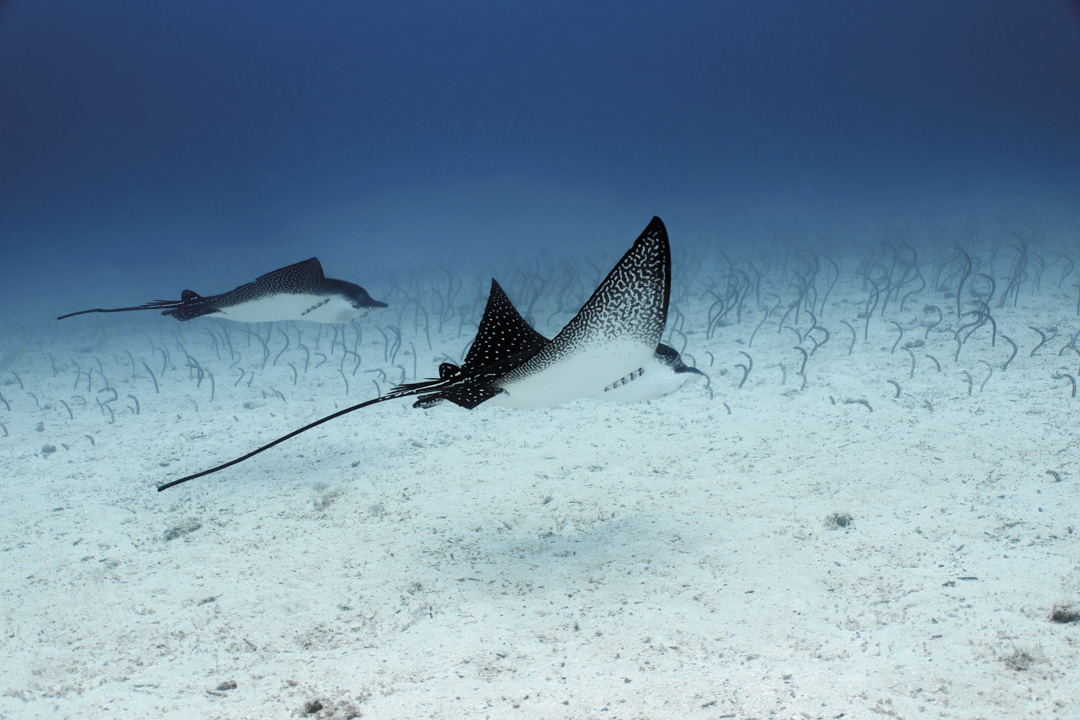
Spotted eagle rays cruise over a colony of garden eels.
A fantastic start to our summer 2021 Galapagos trip: we had this duo of beautiful rays on our very first dive!
The Galapagos, August 2021
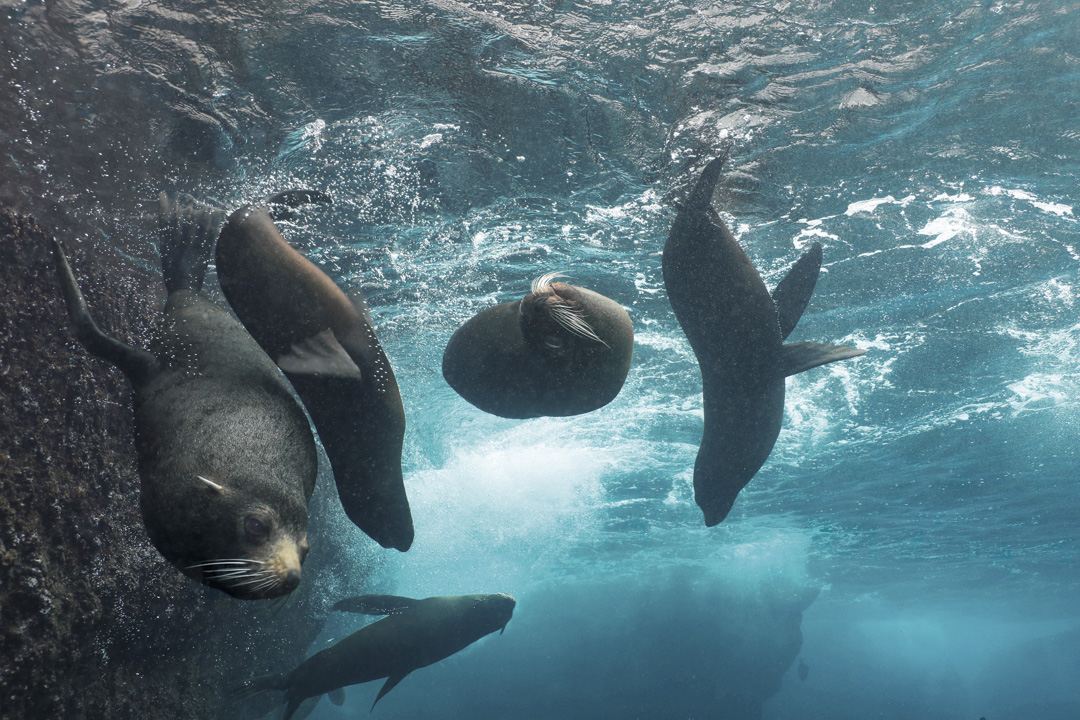
Fur seals playing in the surge.
It’s very hard to get decent images of these guys despite the fact that they’re not skittish. The surge and their own movements create innumerable little bubbles that all too frequently fill
the frame or ruin the nicest parts of a photograph.
Wolf, The Galapagos, August 2021

A whale shark comes in.
Our first two days at Darwin we saw one or two every dive; but unfortunately that was it – no more for the rest of the trip. We were extremely lucky to see one off- season in February 2022, though...
Darwin, The Galapagos, August 2021
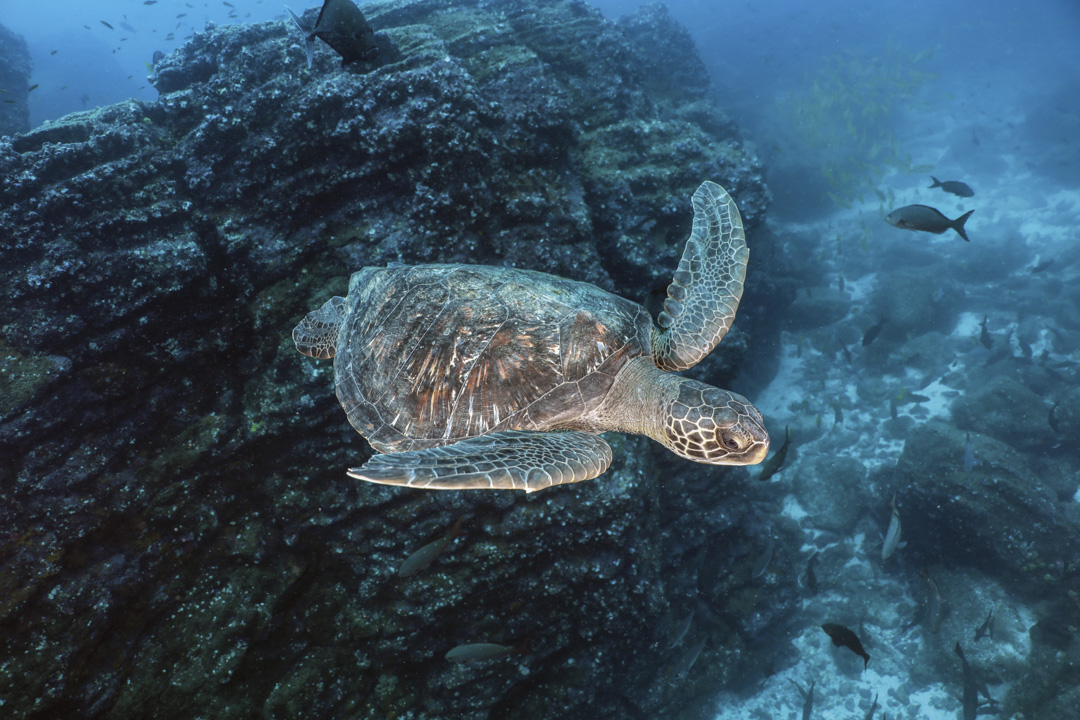
A green turtle flies over rocky structures below it.
The Galapagos, August 2021
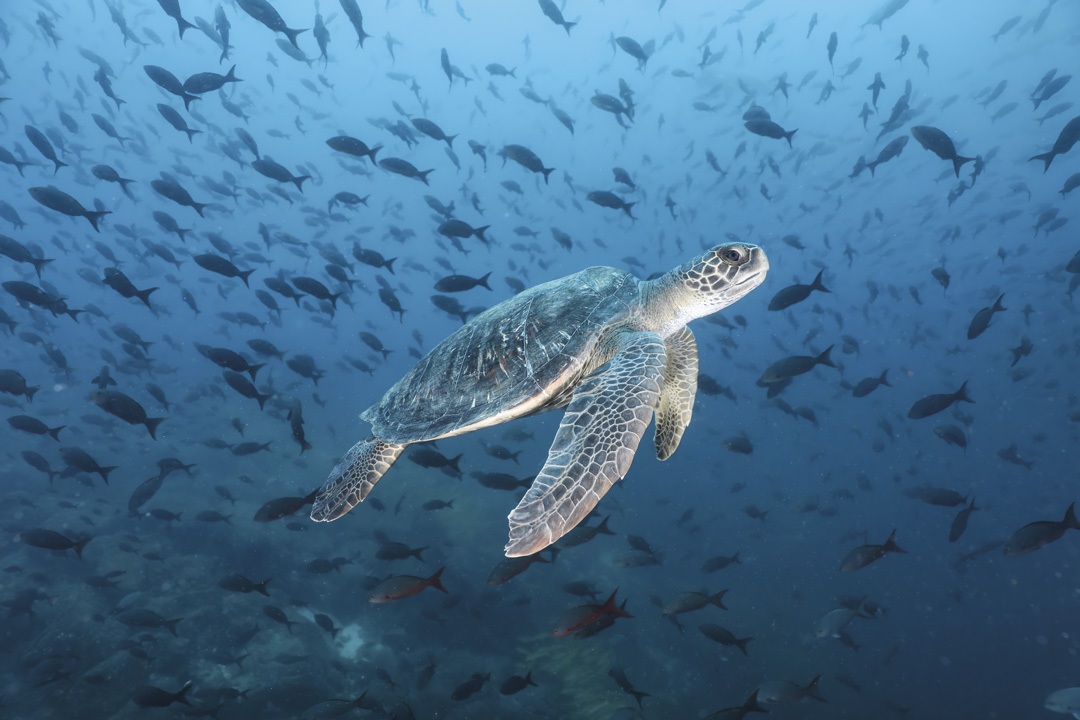
A green turtle surrounded and framed by a myriad creole fish.
This animal seemed to know exactly where to place itself in the water column to make a nice photograph! Every position added an interesting element, every frame came out wonderfully.
Darwin's Arch, The Galapagos, August 2021
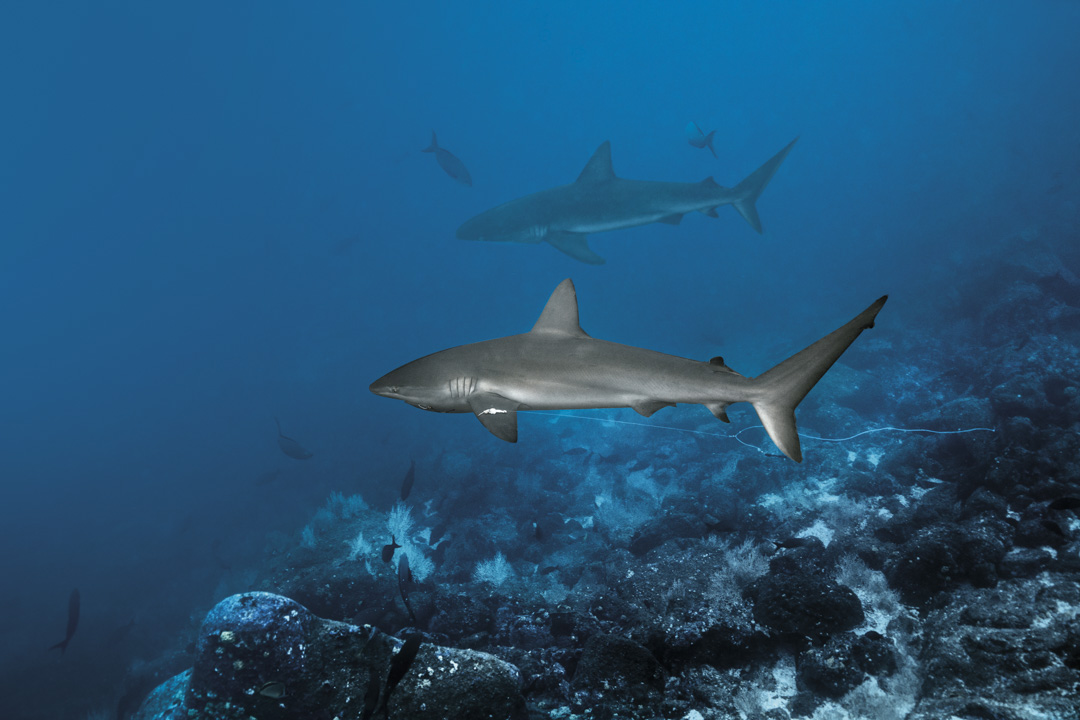
Galapagos sharks at Darwin or Wolf. The closer one is visibly hurt and encumbered by a fishhook and line.
The number of wounded or scarred sharks we see under the surface is rather horrific — and not least because we frequently run into wounded animals even in protected waters...
The Galapagos, August 2021
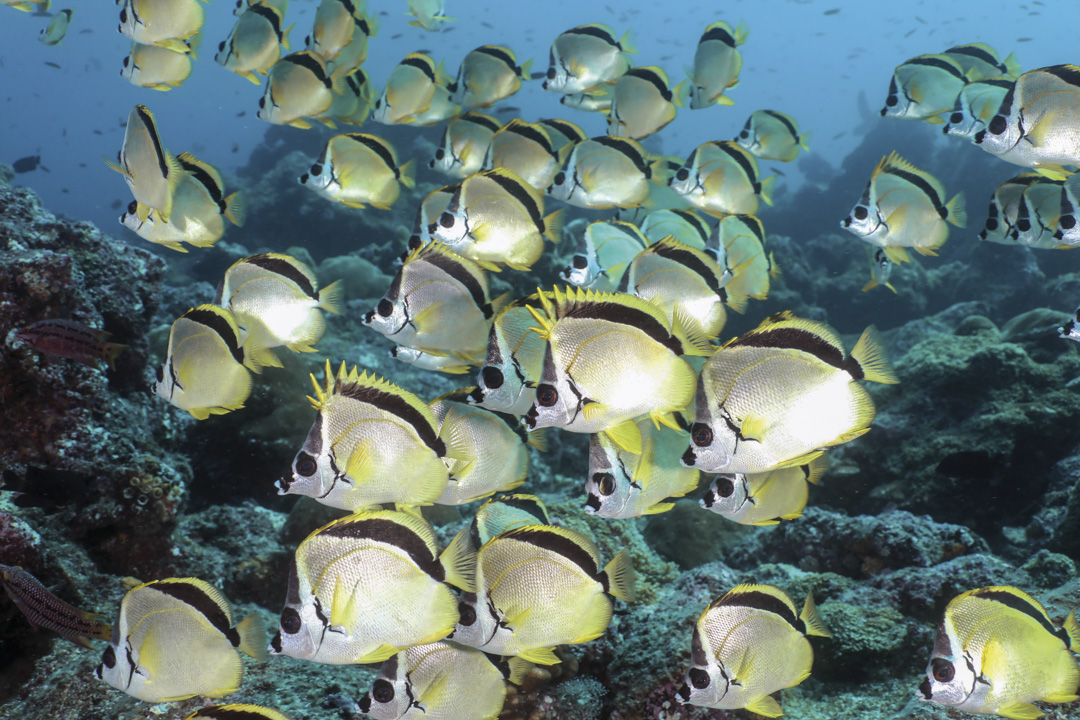
Barber fish, a variety of butterflyfish that clean the sharks and rays, ridding them of parasites and dead skin, in the region.
Just like cleaner wrasses elsewhere in the world, these fish set up cleaning stations like car washes and tend diligently to their clients’ needs. The main differences? The service is free of charge and the providers are granted a meal!
The Galapagos, August 2021
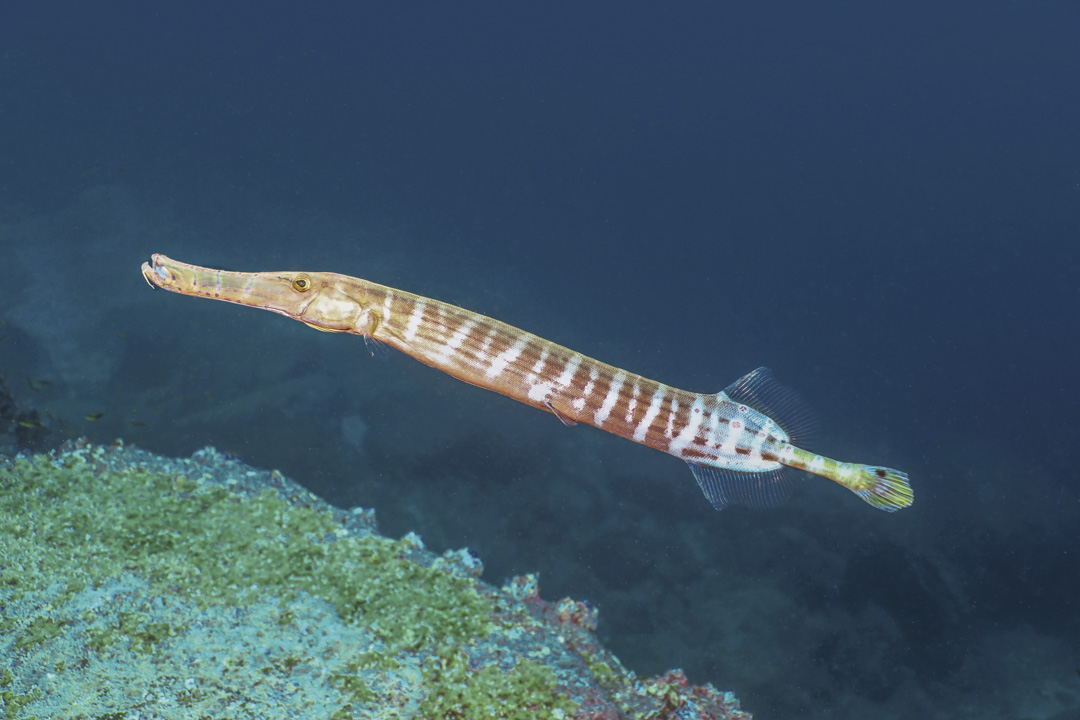
A trumpetfish, in this case unusual in its hues, swims over the edge of the reef.
The Galapagos, August 2021
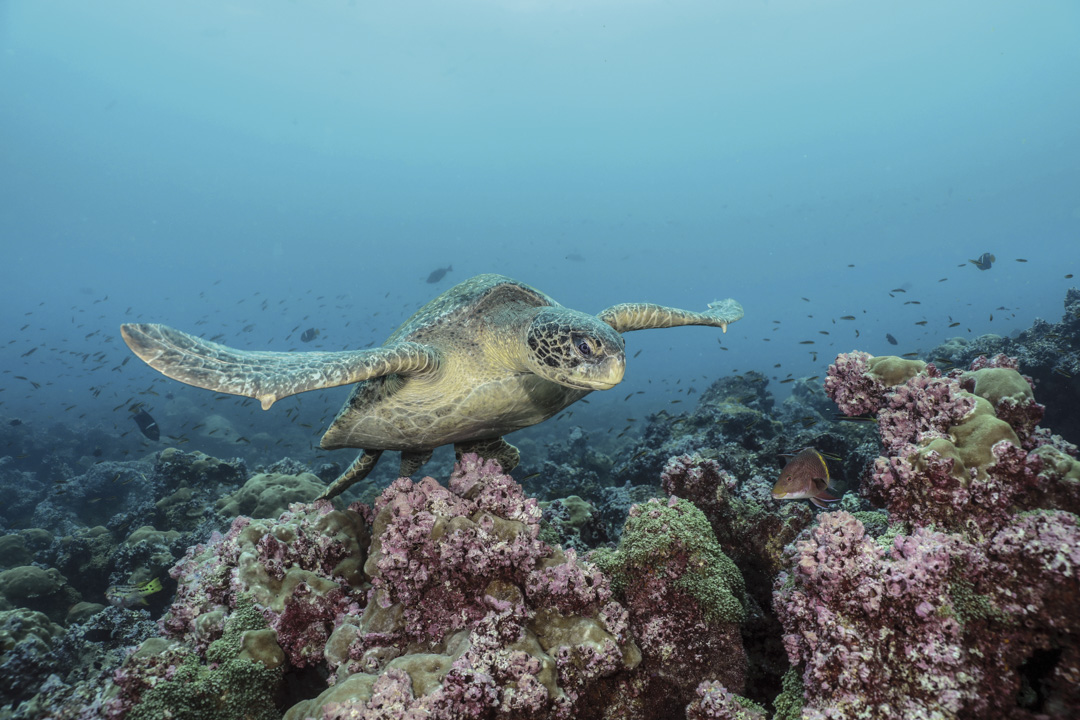
A green turtle checks out a Mexican hogfish while making its rounds.
The Galapagos, August 2021
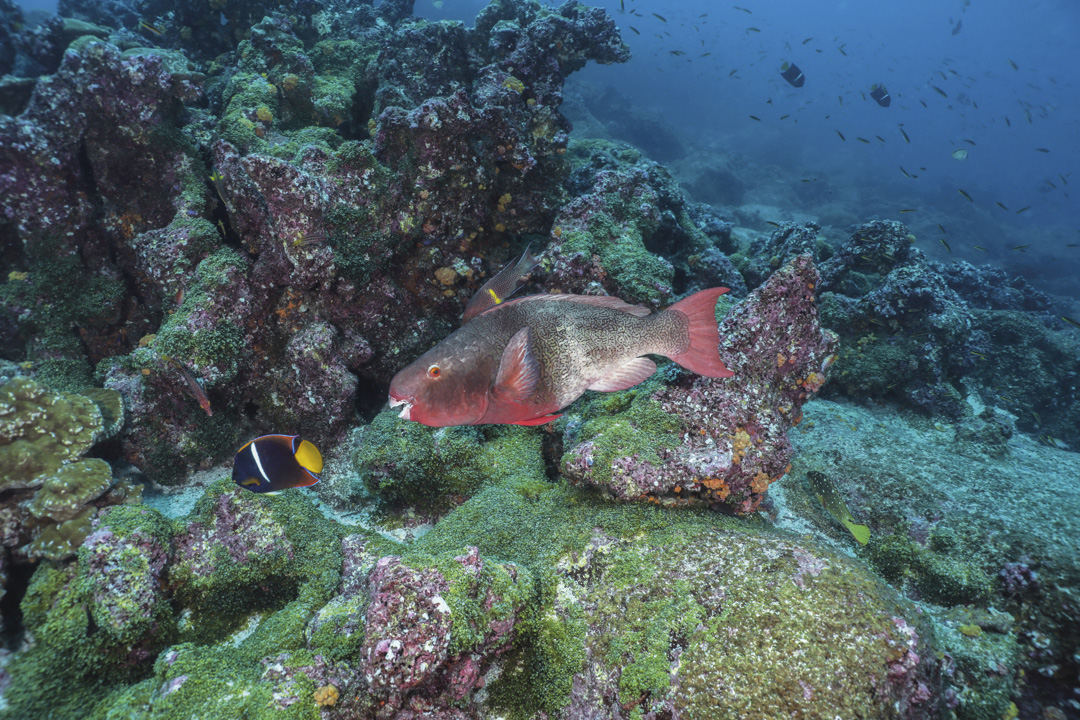
A parrotfish with a juvenile king angelfish.
Angelfish are very interesting indeed in that they go through 3 different stages over the course of their lives: as juveniles, intermediates or adults. All three phases are entirely different both in pattern and color!
The Galapagos, August 2021
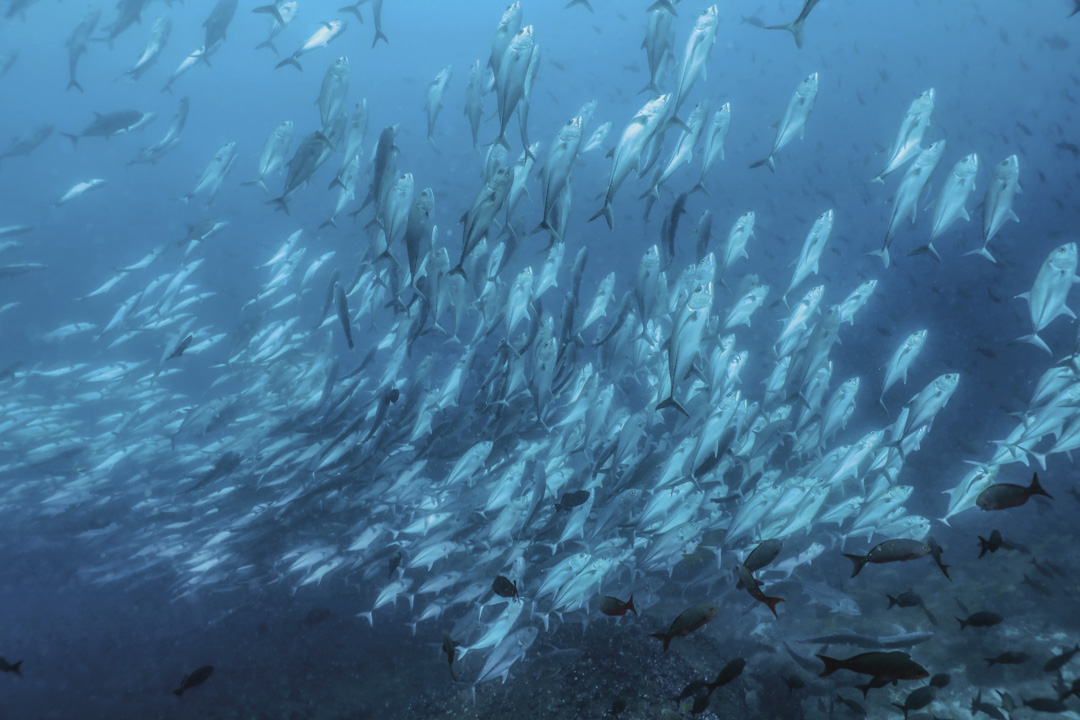
A school of jacks on the rise.
The Galapagos, August 2021
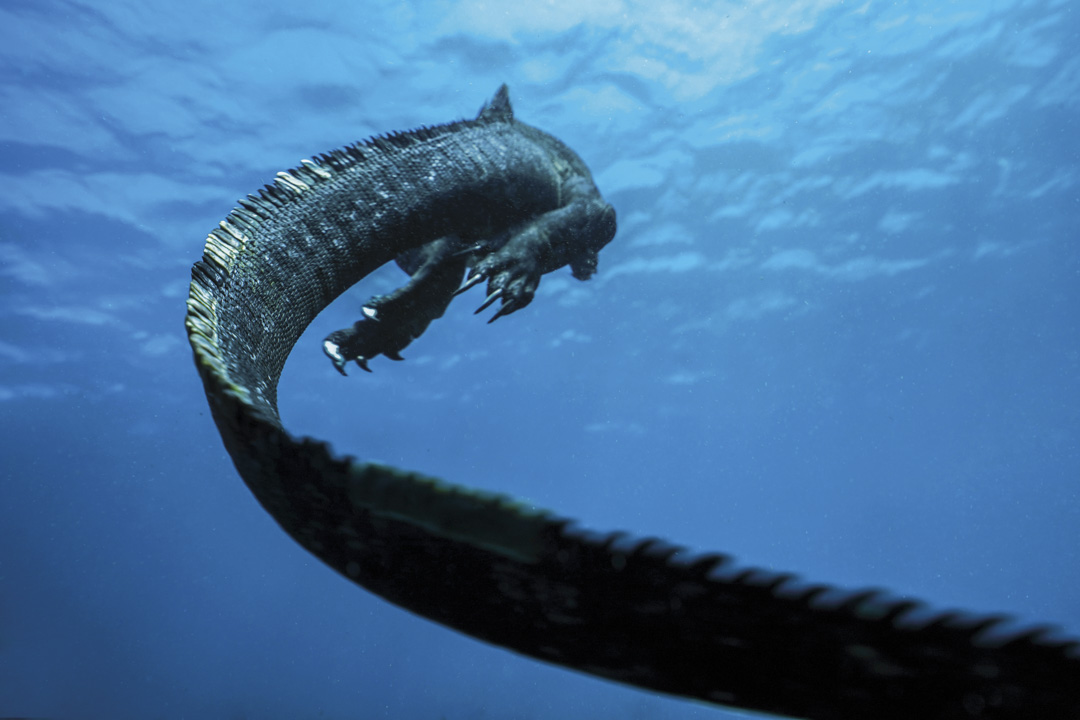
Marine iguana tail.
It would have been hard to guess how this image would turn out when I shot it...
Cape Douglas, The Galapagos, August 2021
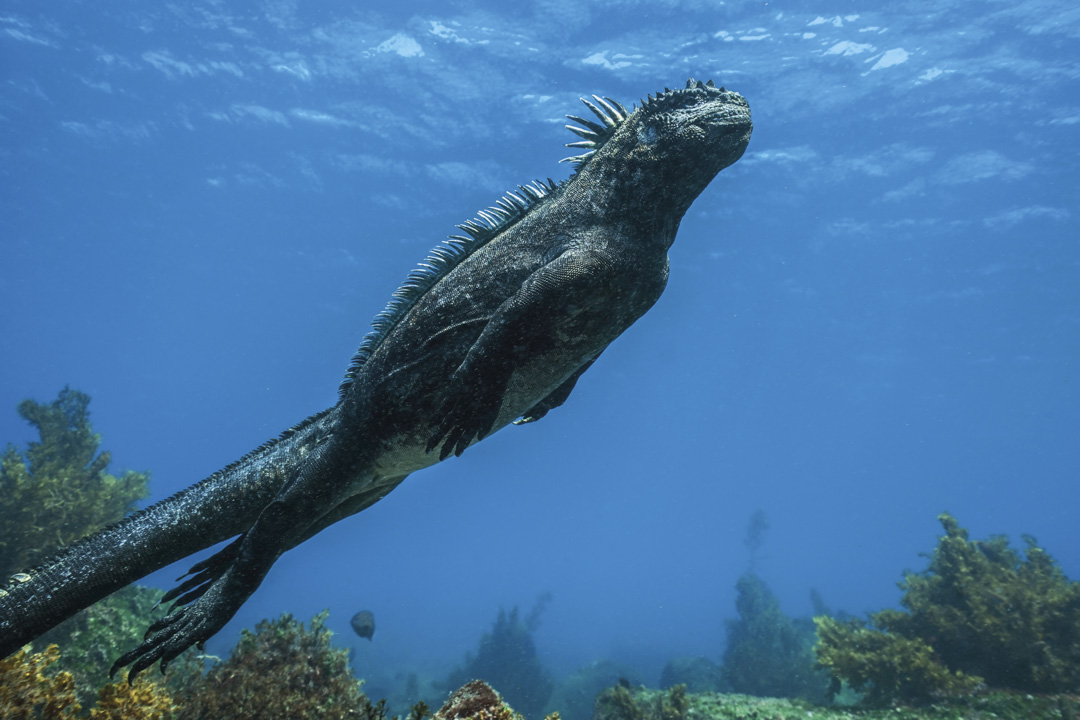
A marine iguana launches itself towards the surface for a breath.
Truly unique and fascinating to watch, marine iguanas are clumsy swimmers that range from 12 to 56 centimeters in size, are endemic to the Galapagos and feed on algae in the intertidal zone. Although they are nearly always in very shallow water and don’t stay submerged for long, they can dive down to 30 meters and spend up to an hour underwater!
Cape Douglas, The Galapagos, August 2021
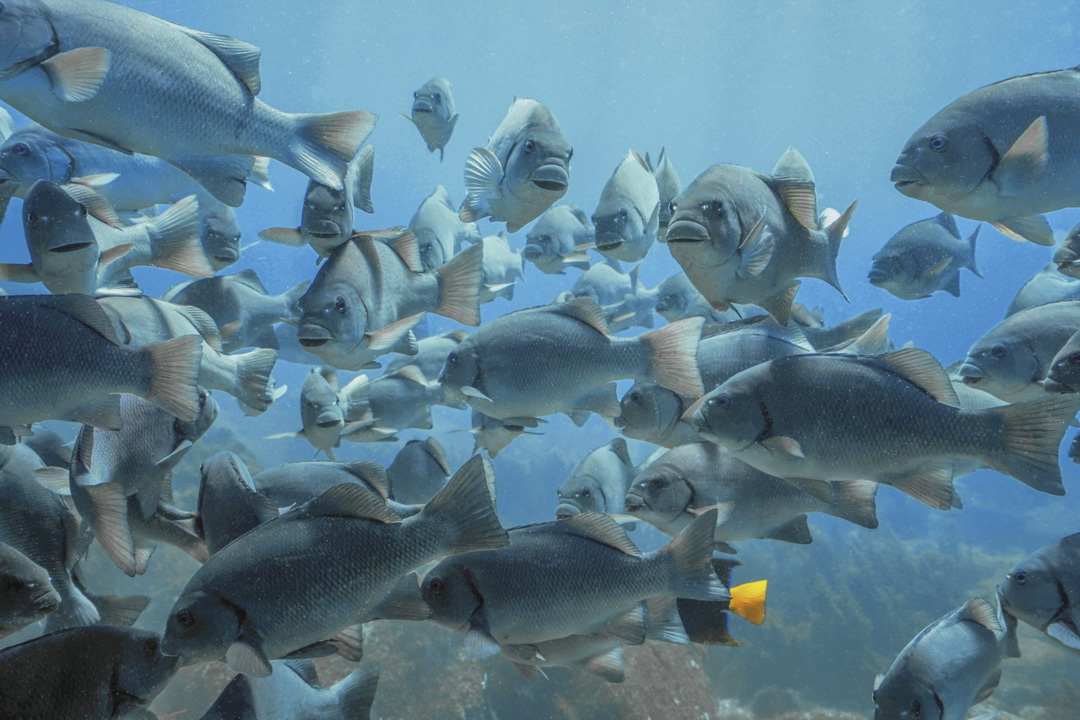
School of fish, possibly a local species of chub.
It’s always fun to get lost in a school of fish and experiment with the camera...
The Galapagos, August 2021

A cormorant shoots through the water as a green turtle slowly swims in the distance.
This is one of my favourite photographs of all time – certainly the best one from the summer of 2021.
Cormorants move very fast and it felt very lucky capturing this. The wonderful setting is nice as well... The bird arrived completely unexpectedly. It was gone as quickly as it came...
Cape Douglas, The Galapagos, August 2021
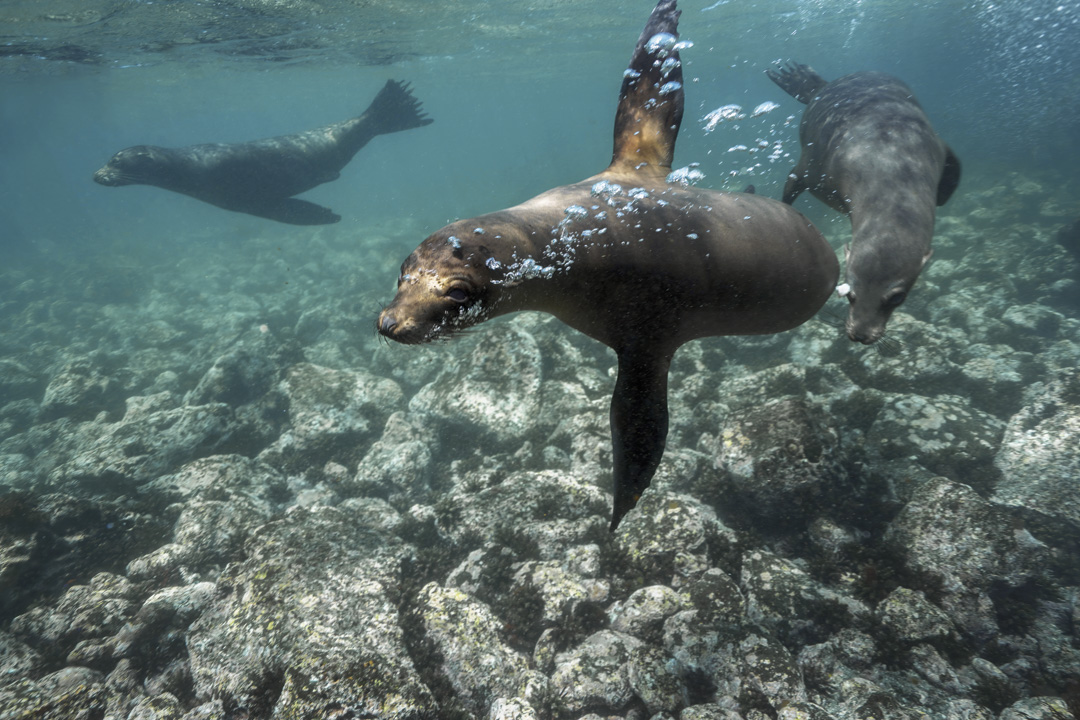
Sea lions swimming around – a little aimlessly.
The Galapagos, August 2021
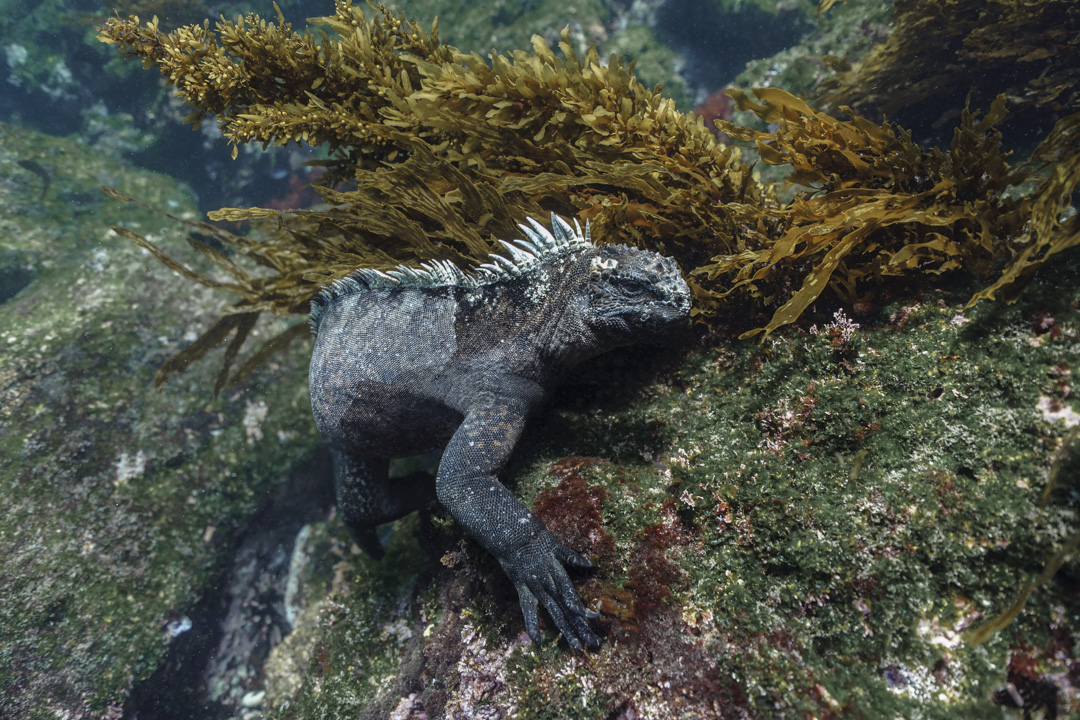
“Godzilla out for lunch!”
A marine iguana gripping a rock in-between grazing sessions!
The iguanas swim and feed in the surge. They need to dig their claws into the algae or rock in order not to be knocked over or swept away by current.
Cape Douglas, The Galapagos, August 2021
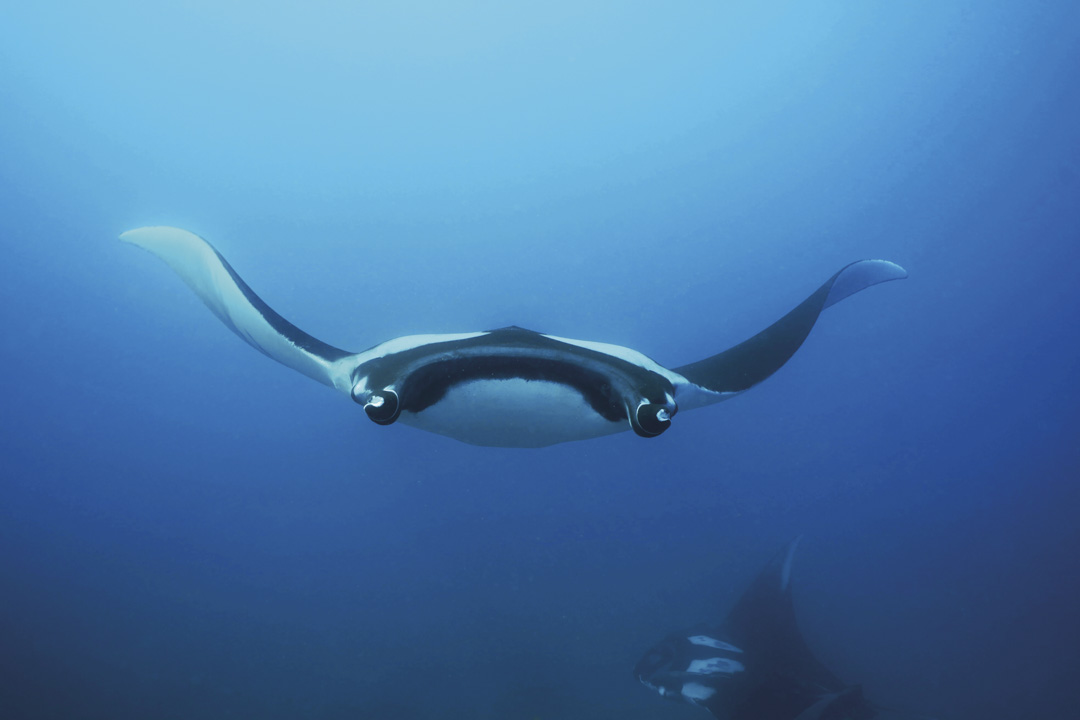
Frontal view of a manta ray, its cephalic lobes curled up, gliding in the waters of Isla de la Plata.
Up to an estimated ten thousand oceanic mantas visit the area each summer. Approximately 2000 have been catalogued and identified as repeat visitors.
We had up to maybe 5 mantas a dive during the trip. Most of the time they kept their distance from each other, so photographs like this one with two animals in the frame were rare.
Near Puerto Lopez, Ecuador, September 2021

Barber fish, a yellow species of butterflyfish, falling away and dispersing like golden nuggets as an oceanic manta ray rises above and away from a cleaning station.
There are five species of fish that are known to “clean” the mantas. The list includes king angelfish; but by far the most common cleaners we saw were these barber fish.
Isla de la Plata, Ecuador, September 2021
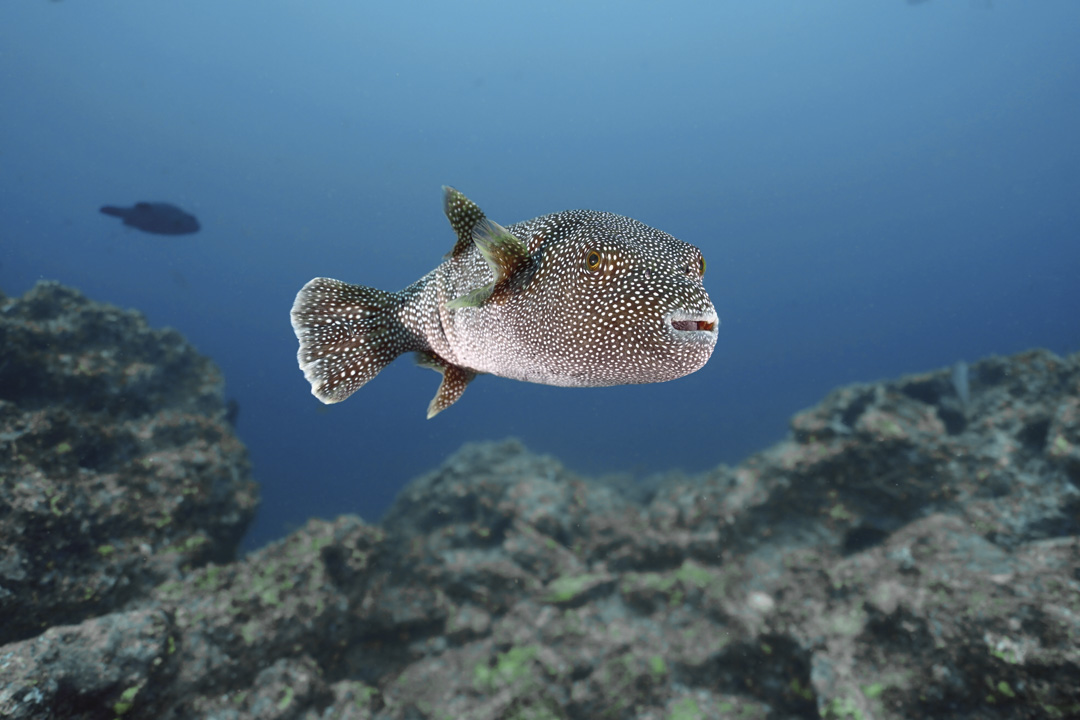
A highly enlightened puffer fish.
The fish looked nothing like this without the flash!
Isla de la Plata, Ecuador, September 2021
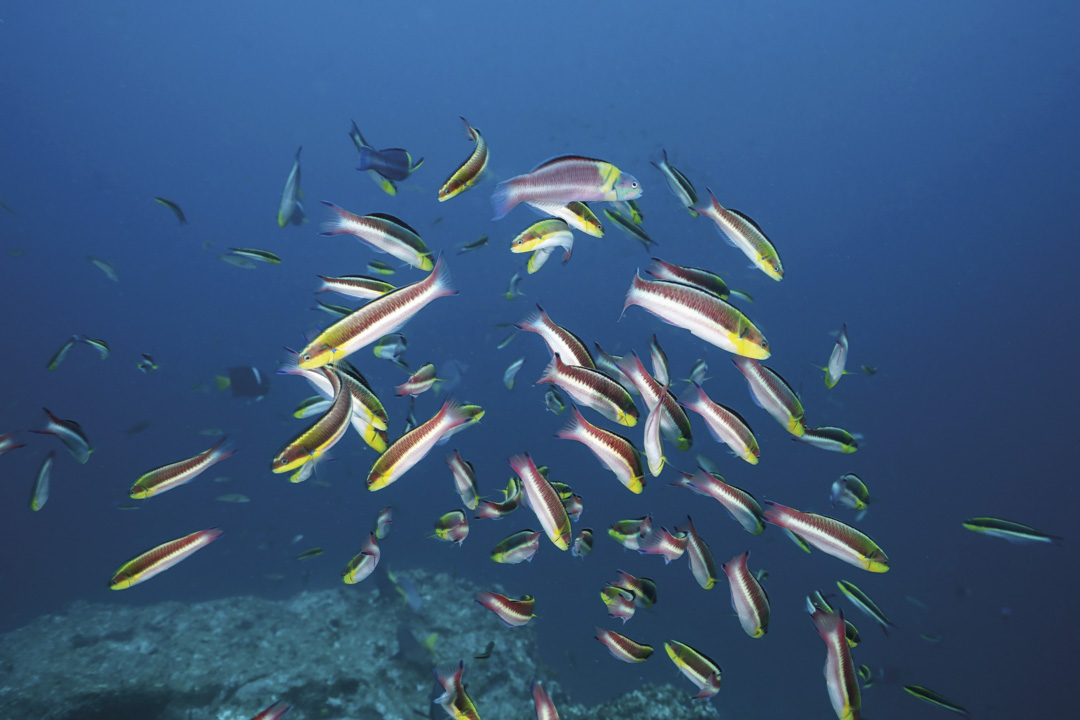
Wrasses.
These fish were hyperactive! I don’t know whether the gathering was about mating or something else.
Unfortunately the strobes scared them away – they dispersed really quickly and swam down to hide in the reef. Wrasses go through several colour phases in their lifecycle (much like angelfish) – juvenile, intermediate (or “subadult”), and adult. Males look completely different than females, are usually much more colorful... and wrasses can also change sex!
Ecuador, September 2021
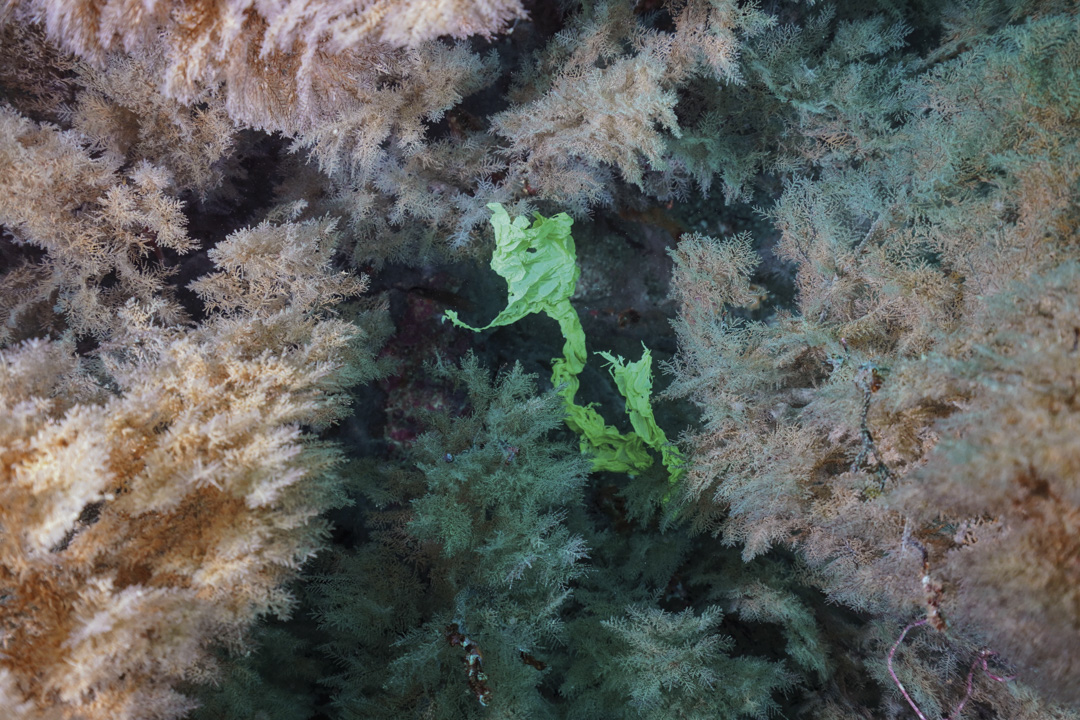
Plastic waste among soft coral
I have now seen garbage in the water or on the beach on practically every trip the last 5 years. From sargassum patches off Florida to beaches in Morocco and Sardinia, open water in the Philippines, the seafloor in Egypt and more. Ecuador was no exception. And plastic bottles are still sold in places as admired and regulated as the Galapagos!
These are nothing like the seas of my youth...
Ecuador, September 2021
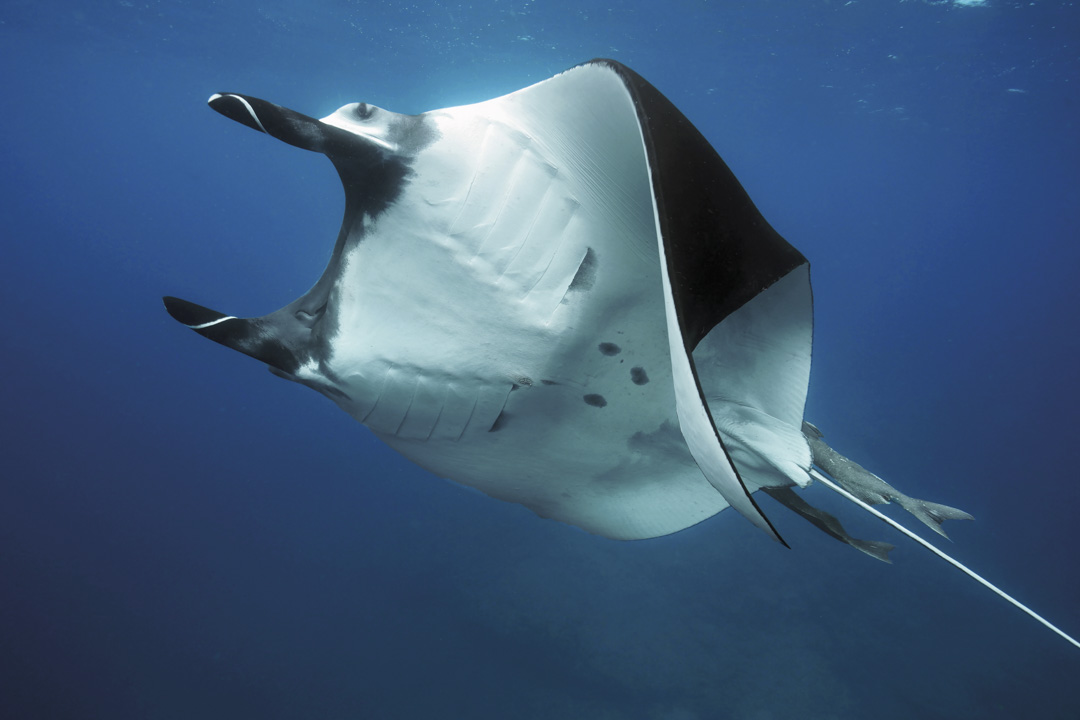
Oceanic manta ray.
This INCREDIBLE manta ray was a player! It came to me, stayed and played with me for an entire dive! It swam below me while I was at the surface, gazing up at me – making direct eye contact – and mirroring my location and speed... And it turned towards me, showing off its beautiful belly, over and over again. The most intelligent fish in the sea (mantas have the largest brain among fish) was clearly playing with me, observing me and enjoying our time together!
Initially it turned towards me, showing its belly and angling its face towards mine, only every few minutes; but soon it was rotating over and over again – every few seconds. As it did so the manta was getting closer and closer to me and it became hard to fit the whole animal in the frame!
Isla de la Plata, near Puerto Lopez, Ecuador, September 2021
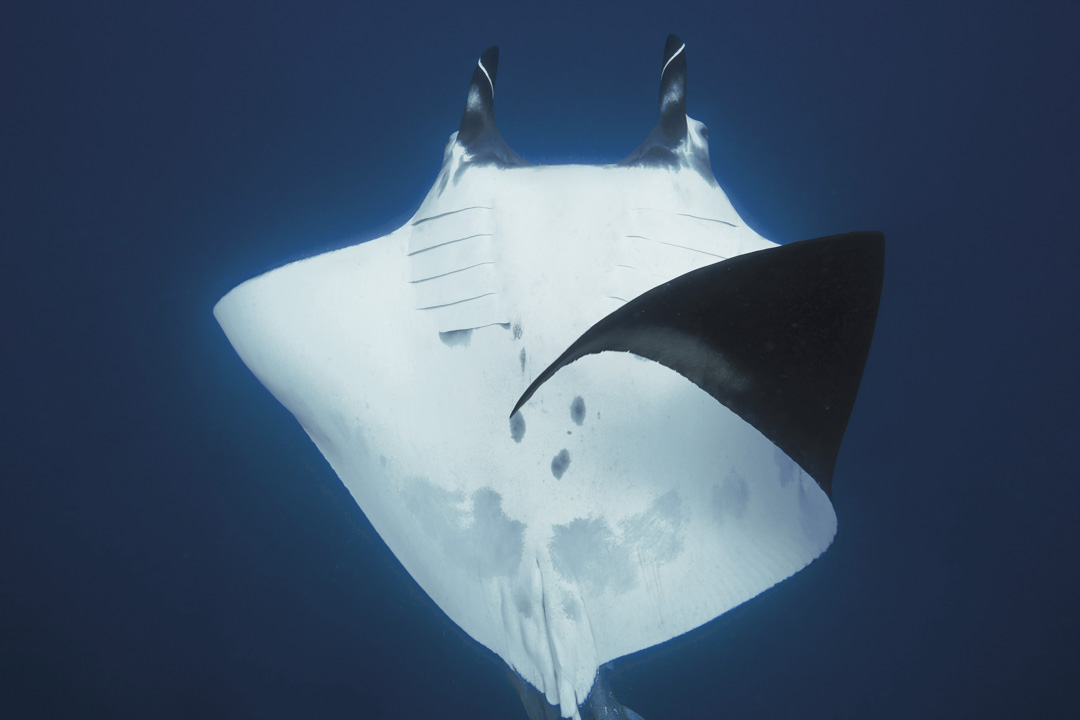
Oceanic manta ray.
This movement of the manta’s wing is not by accident, not haphazard.
This was directly related to the animal’s behaviour – rotating towards me, looking right at me, changing position repeatedly in order to show me its underside.
Manta rays are now killed in the thousands for their gill plates, used in traditional medicine.
Not that traditional after all, though: their gills have only been sought after for two or three decades.
Sometimes these magnificent and highly intelligent animals, creatures that have been known to show gratitude when liberated from netting, ropes and hooks, are killed just to use as bait.
Puerto Lopez, Ecuador, September 2021
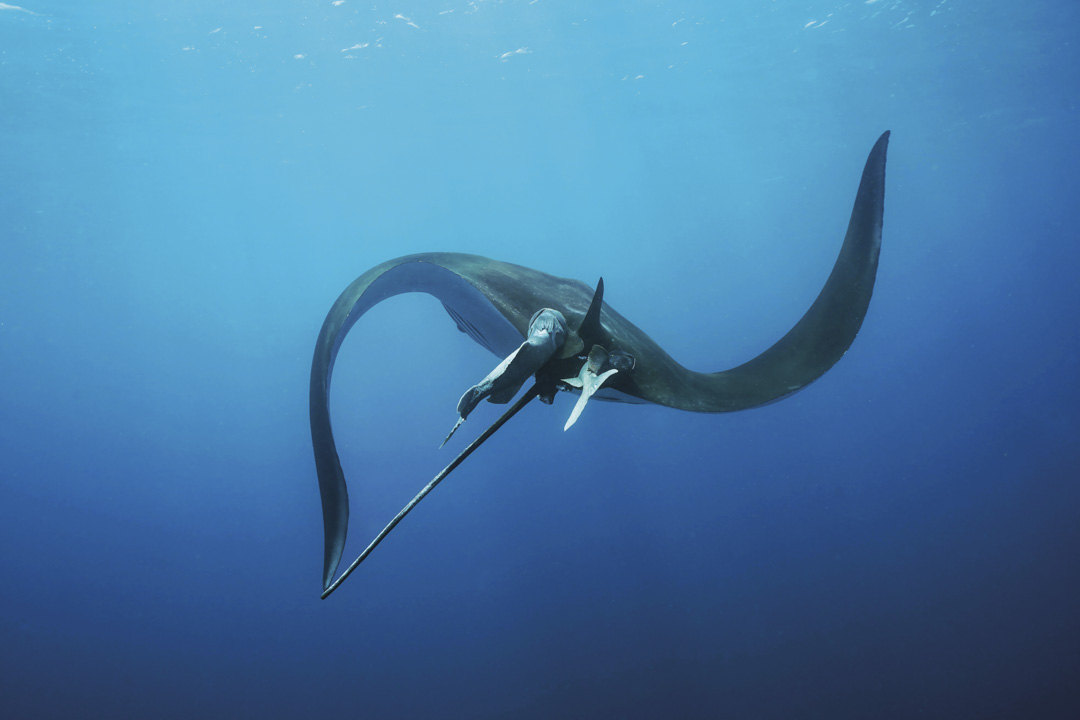
Oceanic manta ray.
These fish got in all sorts of unlikely positions, frequently changing form and varying activity during our time with them... Sometimes it makes you wonder how their remoras, two of which are visible here, manage to stay attached to them!
Isla de la Plata, near Puerto Lopez, Ecuador, September 2021
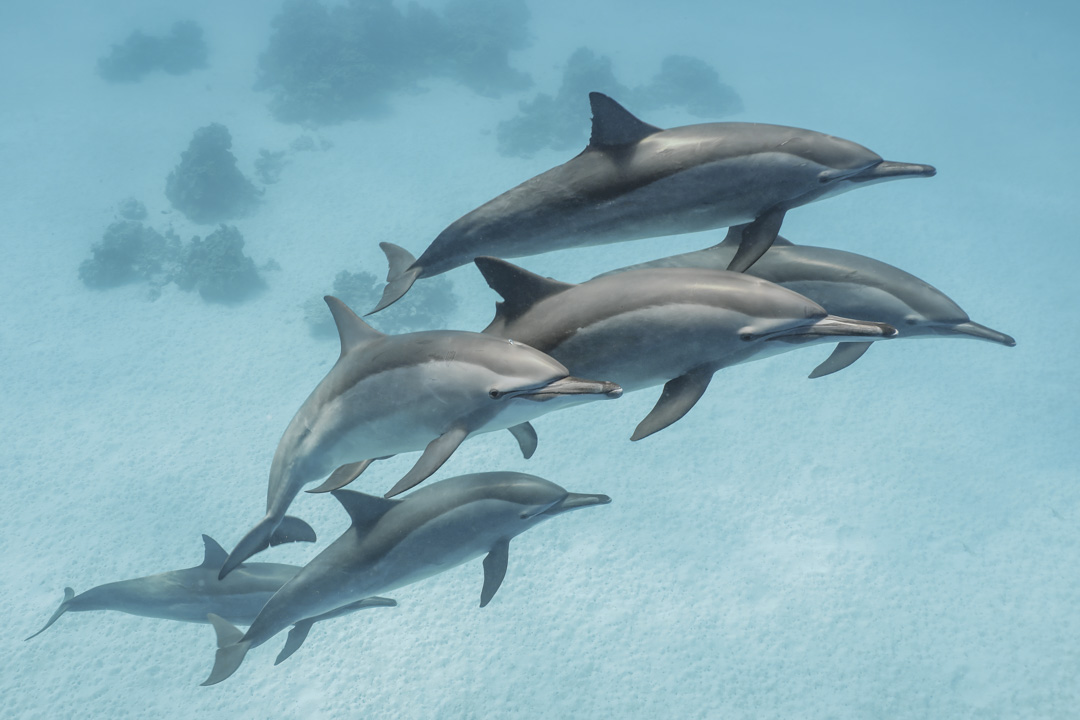
Spinner dolphins.
A typical view of the dolphins rising for a breath.
Sataya, Egypt, November 2021

“Wonderful position”
Spinner dolphin.
The dolphins often look better from down below.
You’re not allowed to dive with whales and dolphins, only to snorkel and free dive with them. The main reason I feel they look better from below is because you see so many pictures of them from above or from the side.
The other reason is because I’m a terrible breath-holder and I myself hardly ever see them from below!
Dolphins themselves rarely hold their breaths for more than a few minutes at a time – 8 to 10 in the case of bottlenose. It’s the beaked whales that are champions at holding their breaths. A Cuvier’s beaked whale recently stayed under for over three and a half hours.
Sataya, Egypt, November 2021
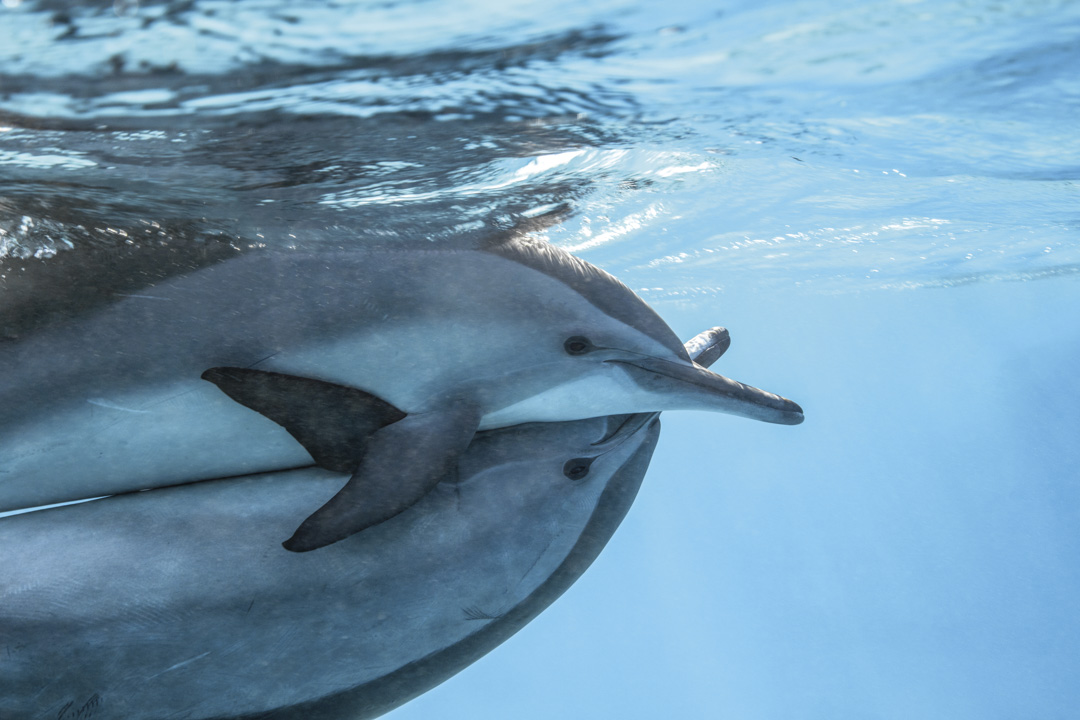
Spinner dolphins entwined in a lovers’ embrace.
Dolphins mate a lot. It’s an activity we observe very regularly in Sataya. Sometimes when you look around you it seems as if the dolphins are mating everywhere.
Sataya, Egypt, December 2021
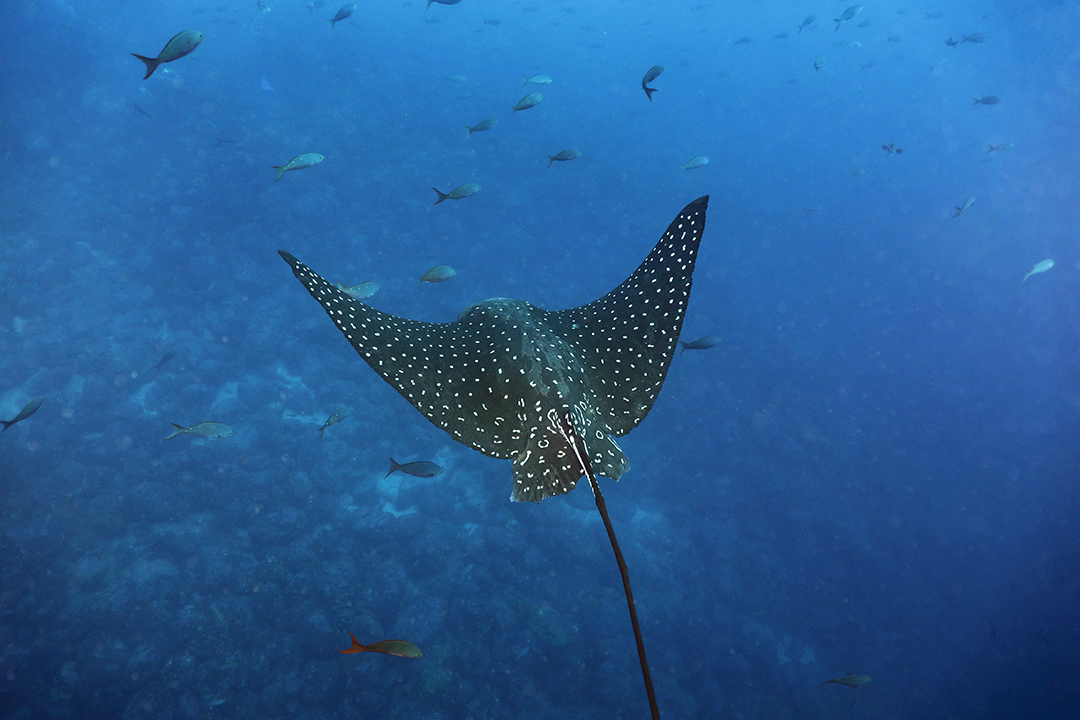
Spotted eagle ray.
This beautiful animal was immobile, hovering in place, in the current. Fairly big but not huge, a wonderful find. Spotted eagle rays don’t usually let you get very close at all, but this one didn’t seem particularly bothered. We swam together for a good 5 minutes, maybe a little more...
It’s a rare, highly enjoyable treat – a privilege – to get some time with a wild animal, and this was no exception.
Unlike stingrays, which themselves never attack people and rarely sting to defend themselves, eagle rays do not have a stinger on the tail.
The Galapagos, February 2022
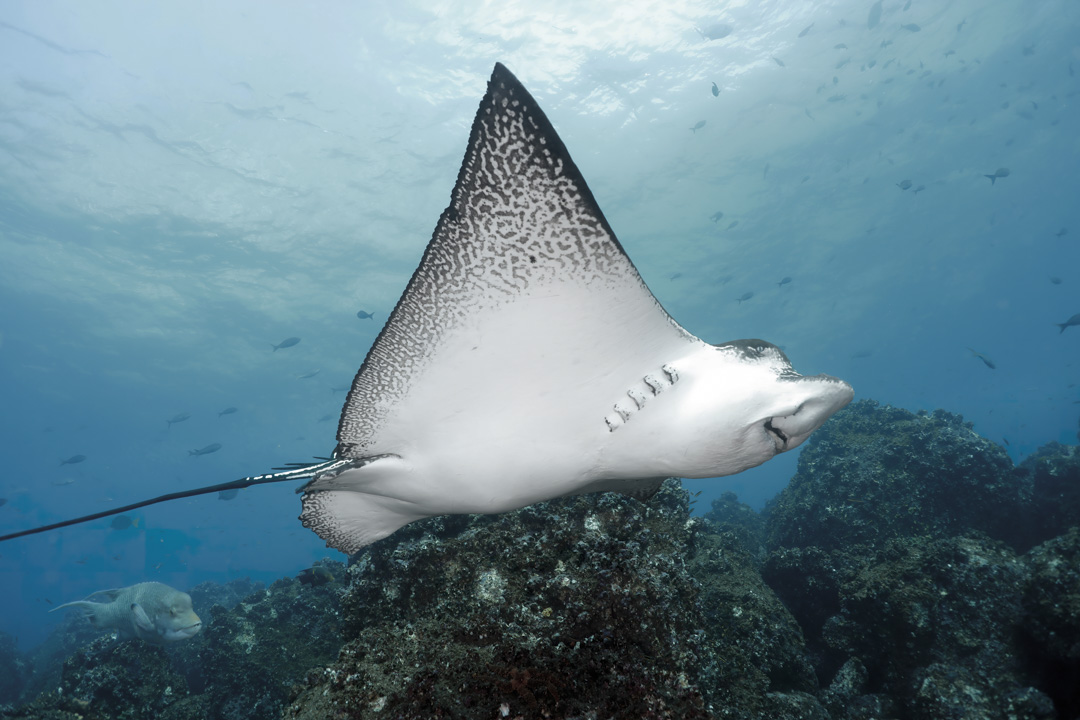
Spotted eagle ray.
The magnificent ray that gave me the pleasure of its company for a long swim after my group spotted it quite early on. Here it is rising up above the reef; we spent most of our time together a little below it. It would have been nice to get more images of its back, the white spots forming a beautiful contrast on the background colour...
Although I have only seen at most two eagle rays at a time, they do occasionally form larger schools. Nothing like Mobula rays in Baja California, though. Mobulas, some species of which occur in Portugal, often occur in schools of thousands in Baja.
The Galapagos, February 2022
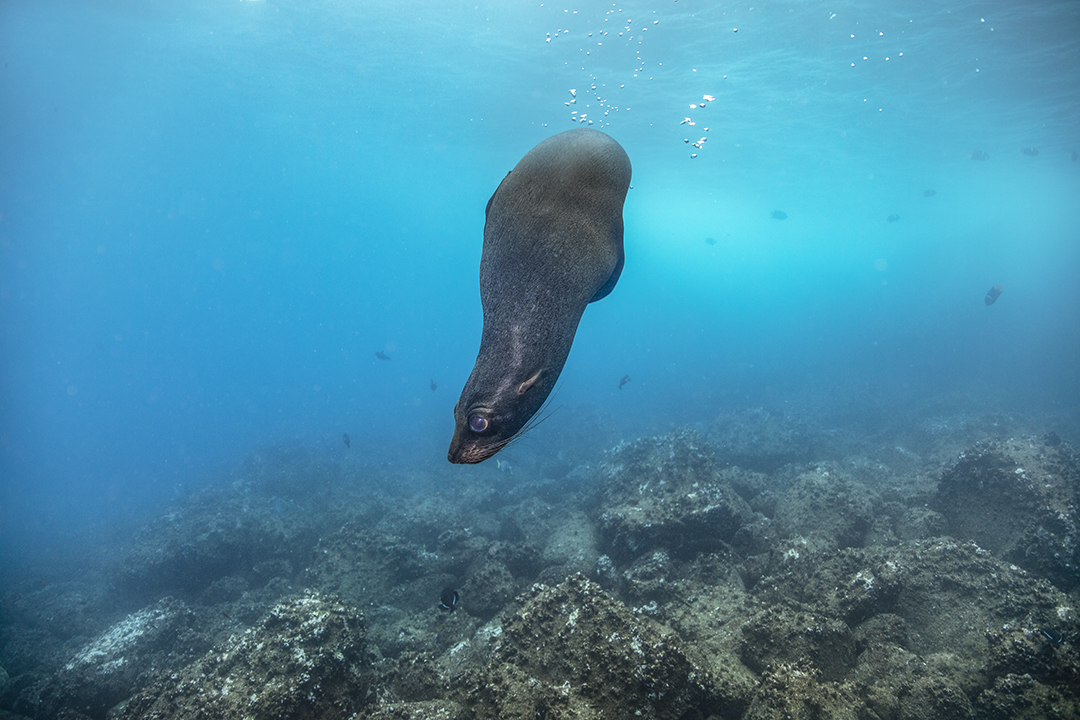
Just another curious, amusing fur seal.
Seals and sea lions are distinctive – differing in their fur and anatomy.
But fur seals are equally as playful as sea lions.
At Wolf in the Galapagos, February 2022
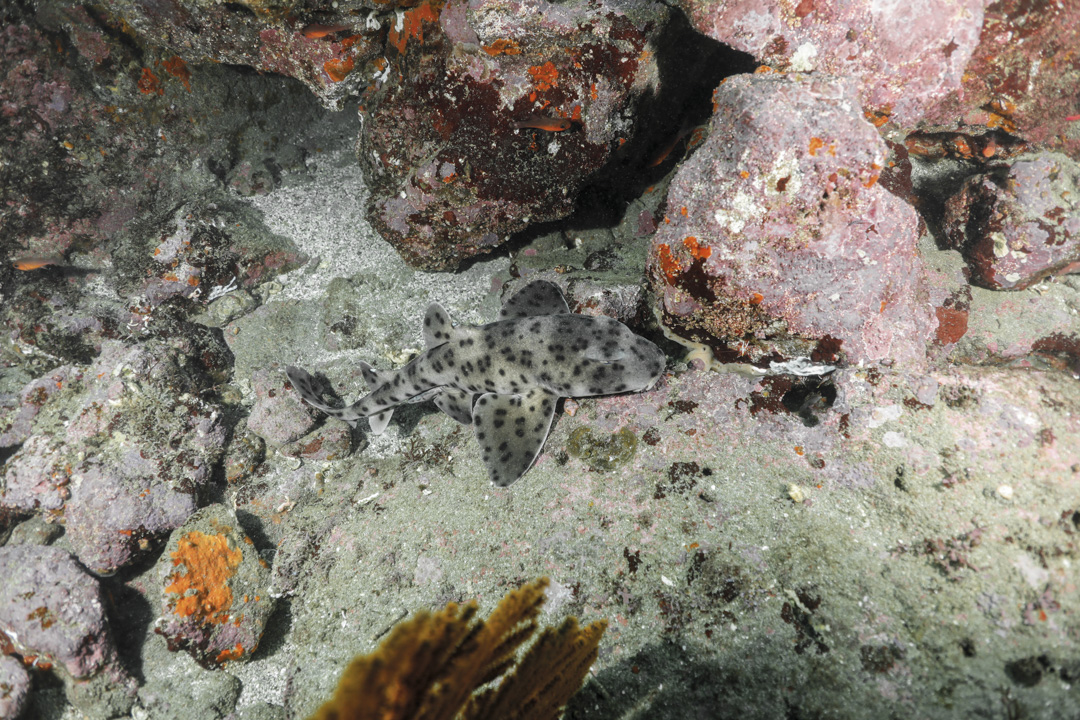
A Galapagos bullhead shark rests on a ledge at Punta Vicente Roca.
I had never seen one of these before, and so this was a very exciting experience for me...
Only about nine species of bullhead or horn shark exist. The one we see most frequently in the media is the Port Jackson shark from Australia.
Other species include the Japanese and Oman bullhead sharks and the Mexican horn shark.
This guy was maybe 25 meters down and quite small. This species only reaches a meter in length.
The Galapagos, February 2022
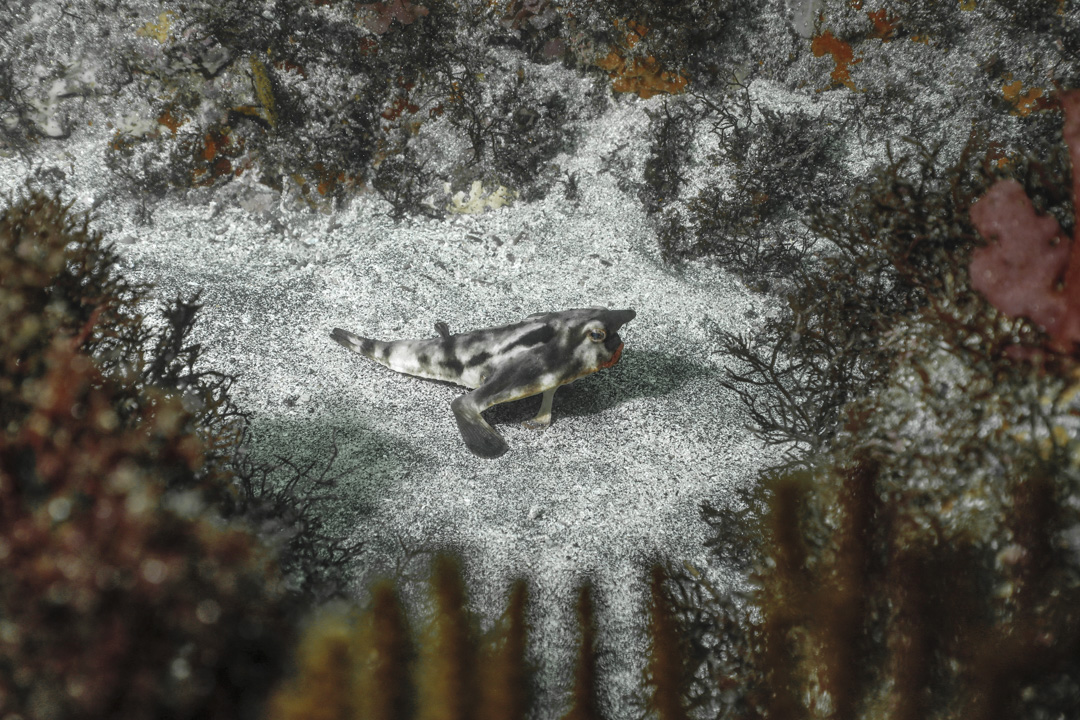
Red-lipped batfish.
You have never seen – and could not imagine – such a bizarre and, if I may say, ugly creature in your life! Looking part amphibian and part reptilian, actually standing on leglike fins, these mind-boggling fish have bright red lips.
They live fairly deep – thirty meters or so down – off Darwin but also Isabela, and they are very clumsy swimmers that look like they’re waddling in the water. Fairly shy, they can actually pick up speed when they want. This one swam away from me repeatedly during our photo session.
He didn’t like me very much...
Isabela, The Galapagos, February 2022
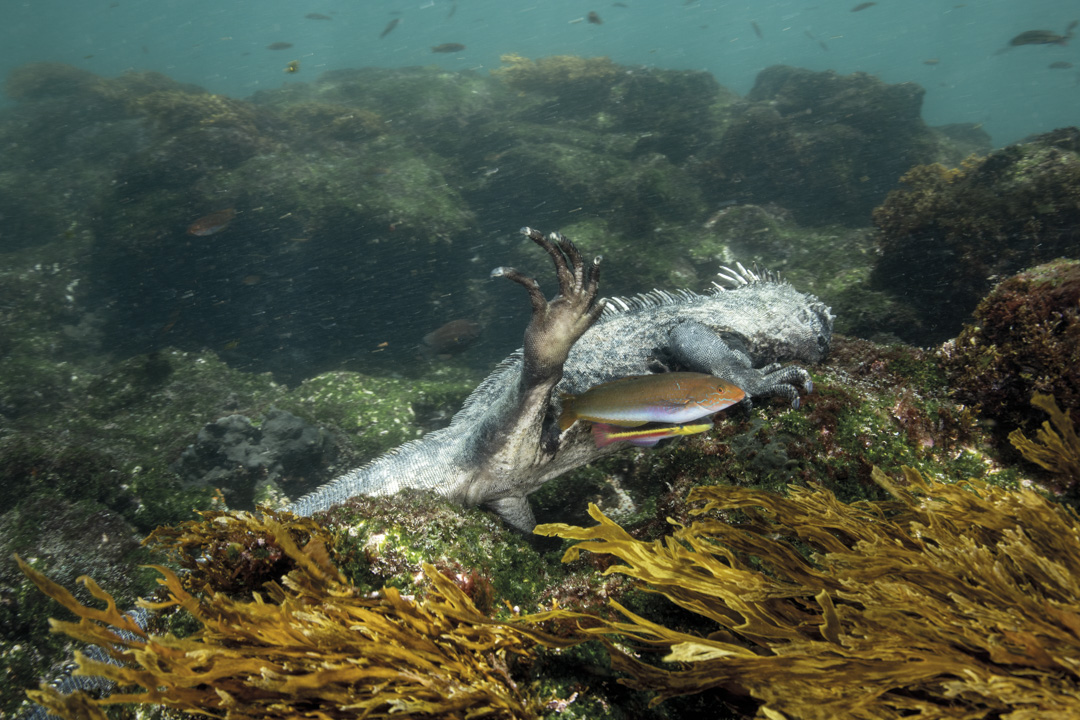
What do you call this behaviour in a marine iguana? Stretching? Calisthenics? !!
Was it trying to scare the wrasse away?
These animals are pushed and pulled by the surge and need to stay rooted in order to graze on algae.
Cape Douglas, The Galapagos, February 2022
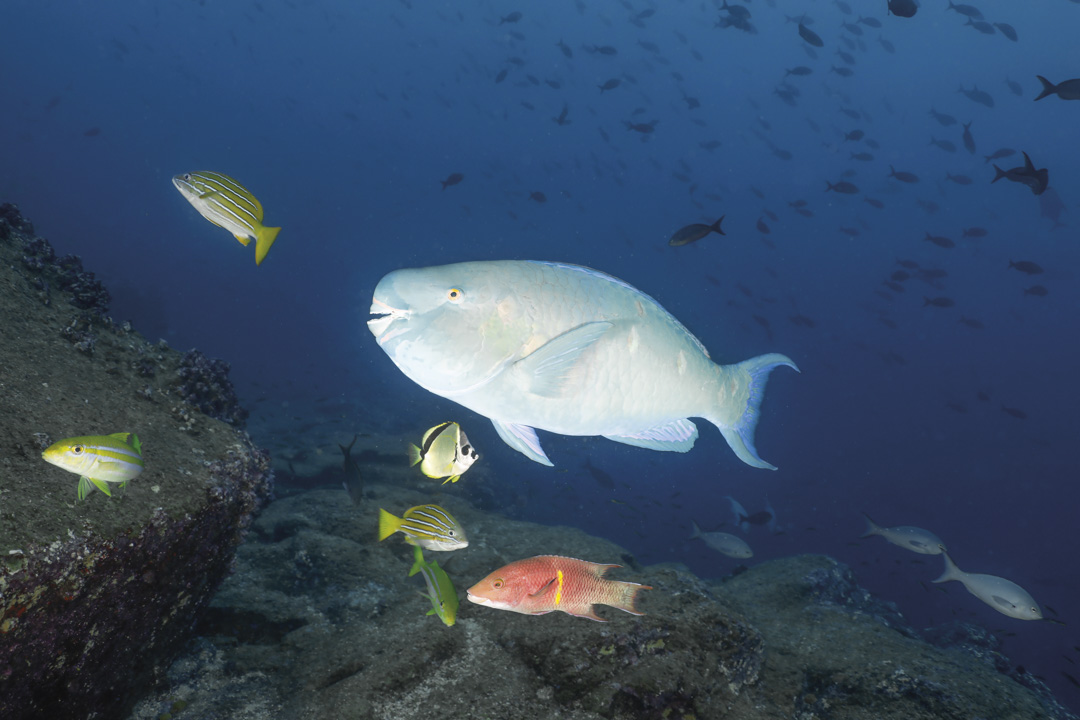
A fairly large parrotfish, its powerful beak which can be used to break coral apparent, swims among snappers, a Mexican hogfish and a barber fish
Parrotfish are amazing animals in that they form a protective, gelatinous cocoon before going to sleep at night.
You can even see sand slide off the transparent matter if you let go of some above it.
Should the enclosure be broken, assuming it isn’t already being watchful enough, the fish is alerted to danger and can make an escape.
Darwin, The Galapagos, February 2022
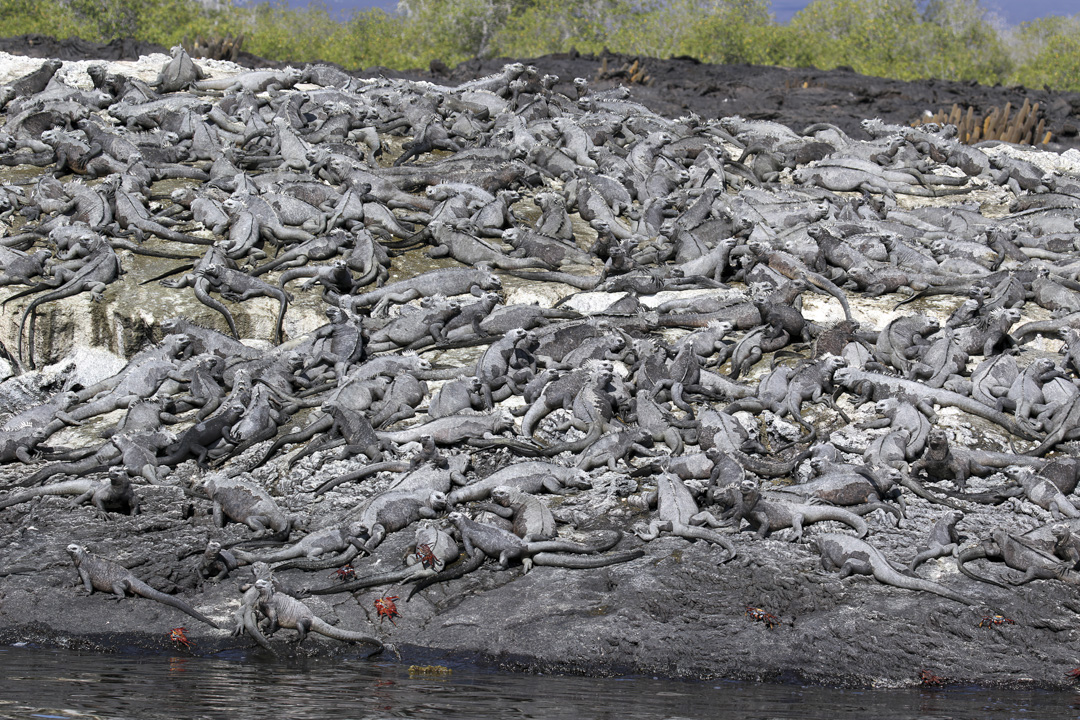
A marine iguana colony adjacent to wonderful mangroves.
Marine iguanas actually sneeze salt! They need to warm up in the sun after feeding in very cold water – and they often huddle together, which also helps keep them warm.
Sometimes you see them standing on each other’s heads!
The Galapagos, February 2022
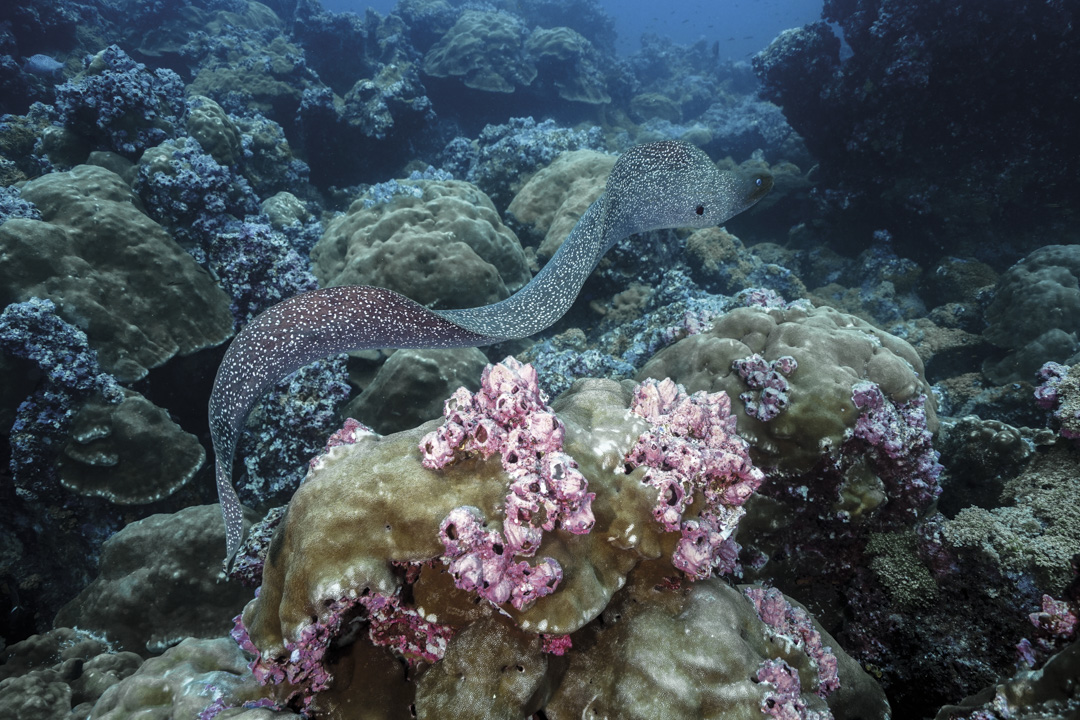
A moray eel changes hiding place or explores.
It’s fairly rare for morays to actively swim out in the open, outside the reef where they are usually nestled among corals or in holes/crevices that seem tailor-made for them.
Morays are far more common in some locations than others. We see a large number in the Galapagos...
Darwin, The Galapagos, February 2022
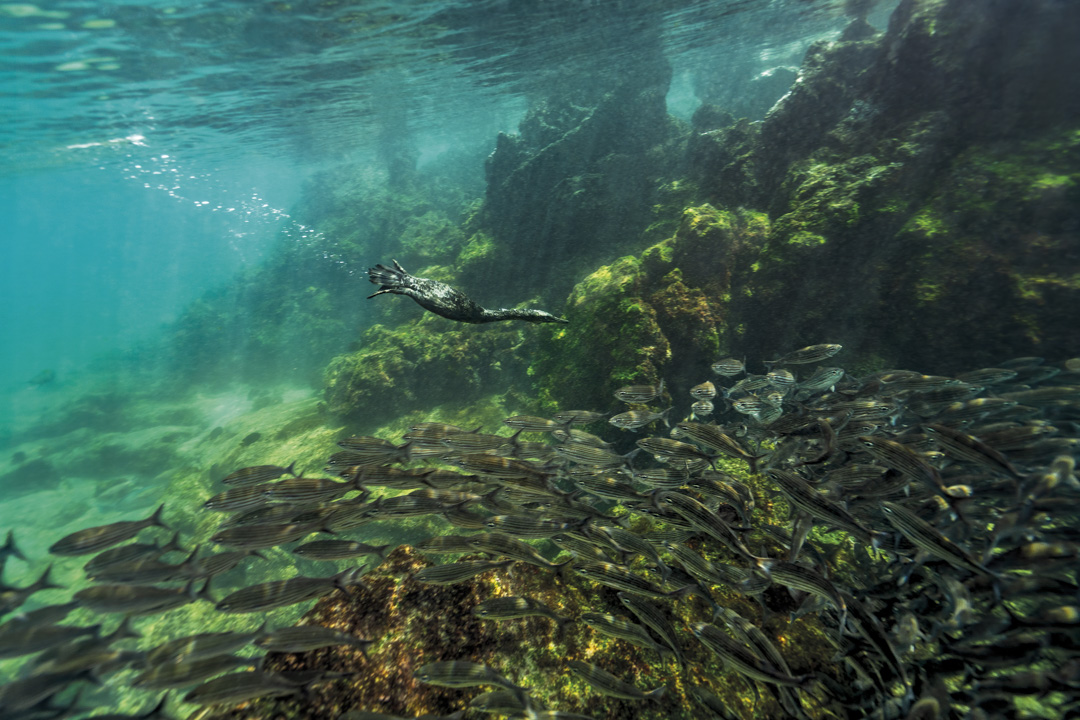
A flightless Galapagos cormorant hunts fish in the shallows of a small bay.
It was an amazing experience, a rarity, to watch a cormorant, one that has tiny wings and looks a little odd outside the water, fish in front of us for a number of minutes. We never saw it catch a fish but it was certainly determined in its efforts...
Most of the images came out somewhat blurry (cormorants are fast indeed) and the exposure wasn’t perfect. This image is a little enhanced.
The Galapagos, February 2022
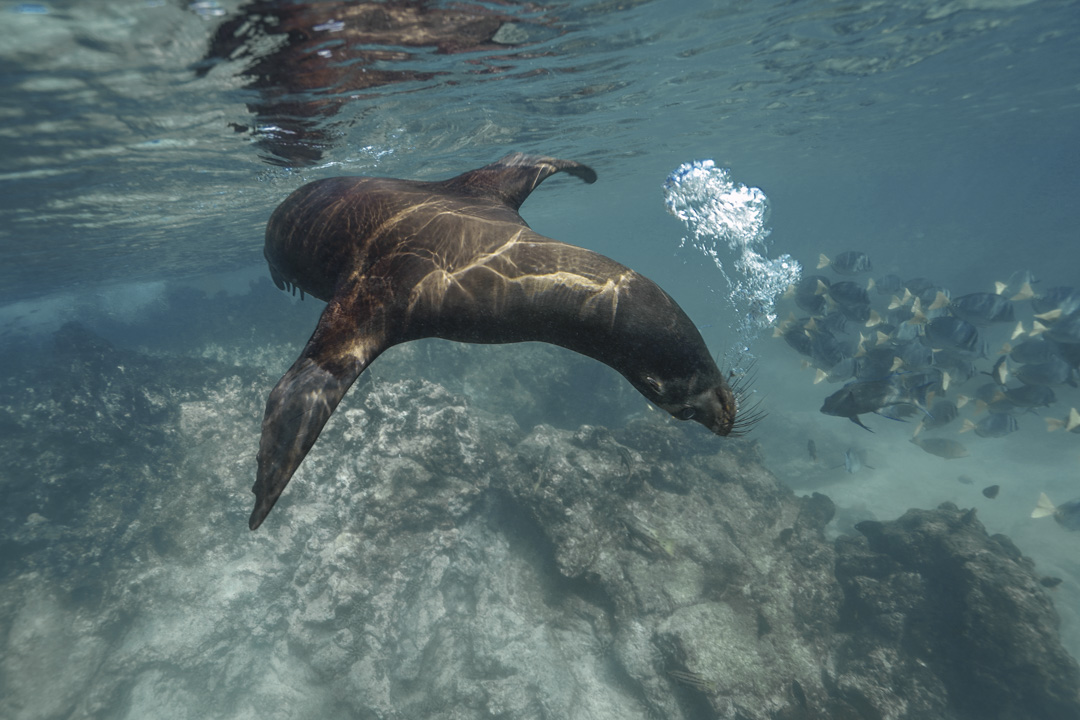
“Bubble Blower heading to school”
Sea lion and surgeonfish.
Sea lions are by far the most playful animals you can encounter under the surface.
Equally jovial, if not more so than dolphins or whale calves. Highly interactive and endlessly entertaining, they dart about, blow bubbles, dive and rise, rush you, come right up to your face and stare at you, even nibble at your fins and hair, pull at your equipment or sit on your tank!
Isabela, The Galapagos, February 2022
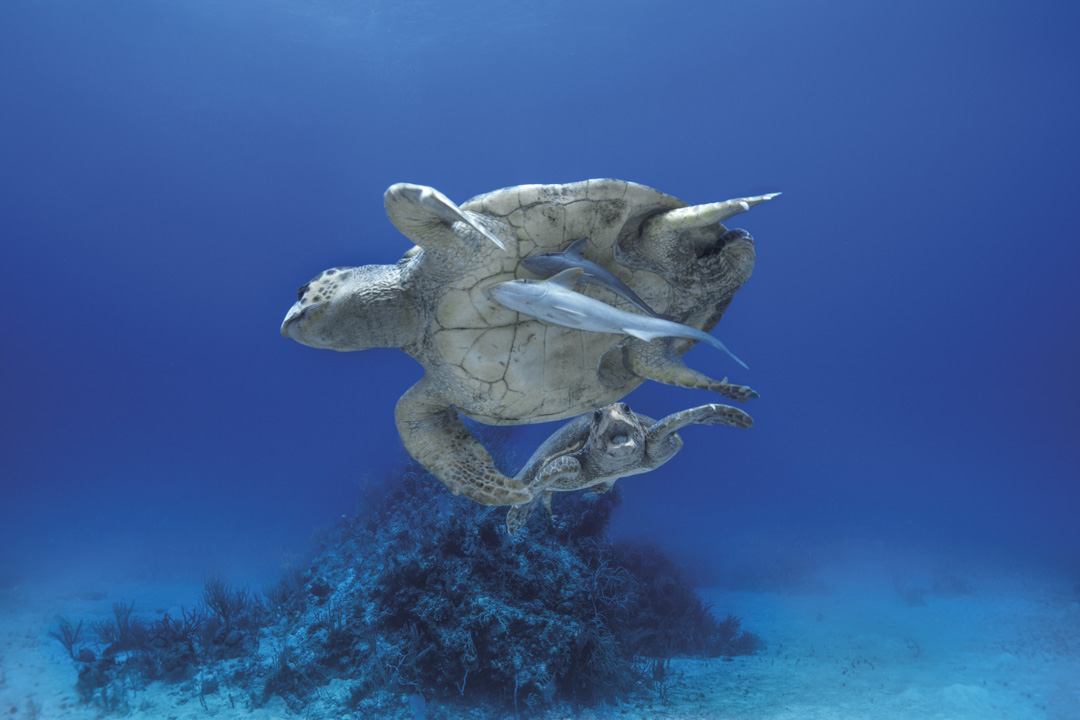
Loggerhead Love – or the preparation of a bite?
Danger Reef in the Exumas, April 2023


